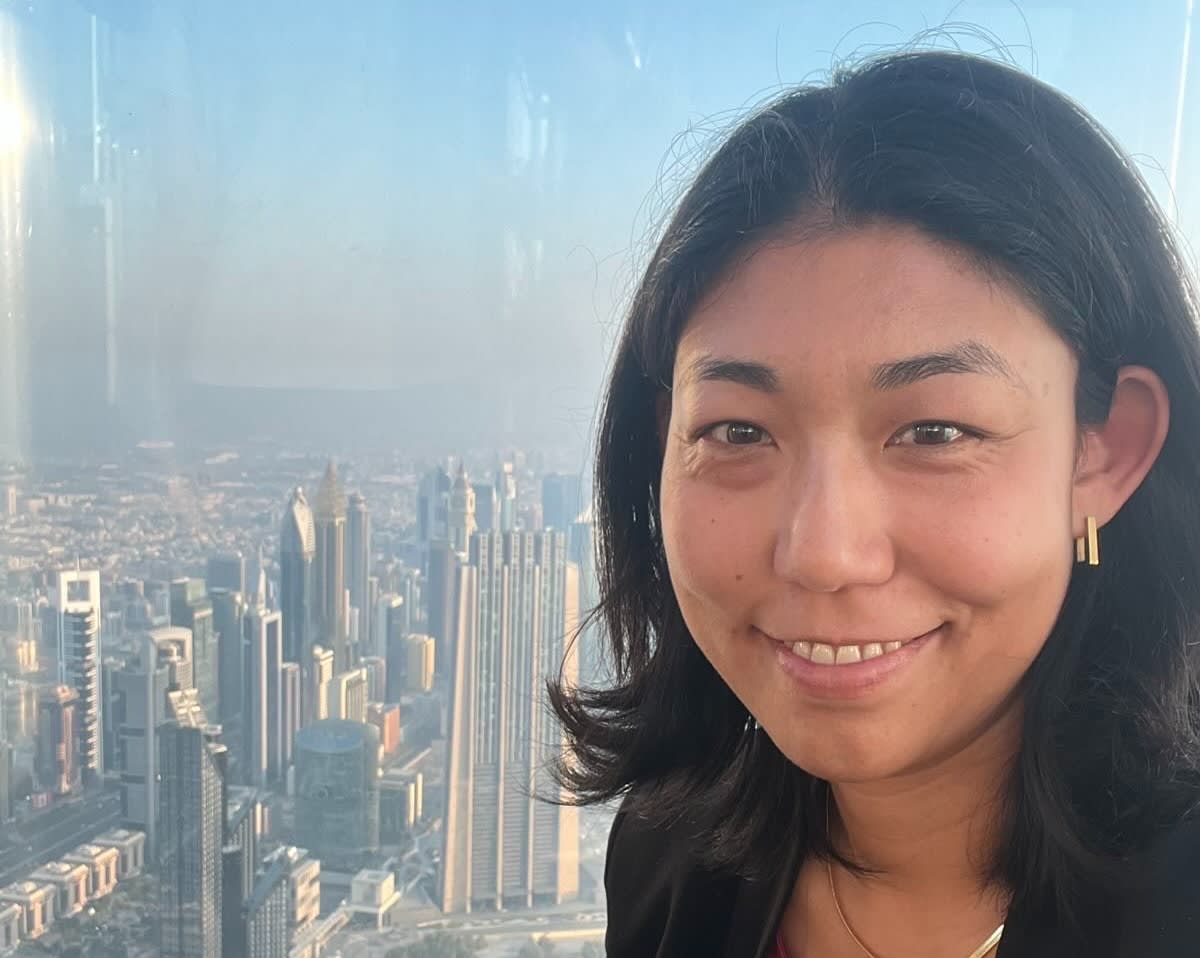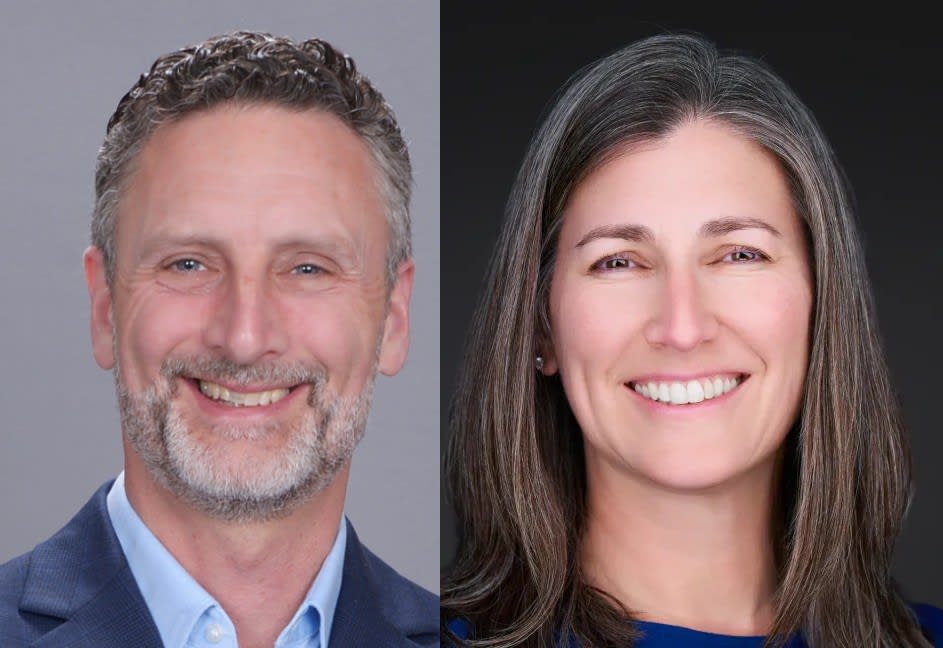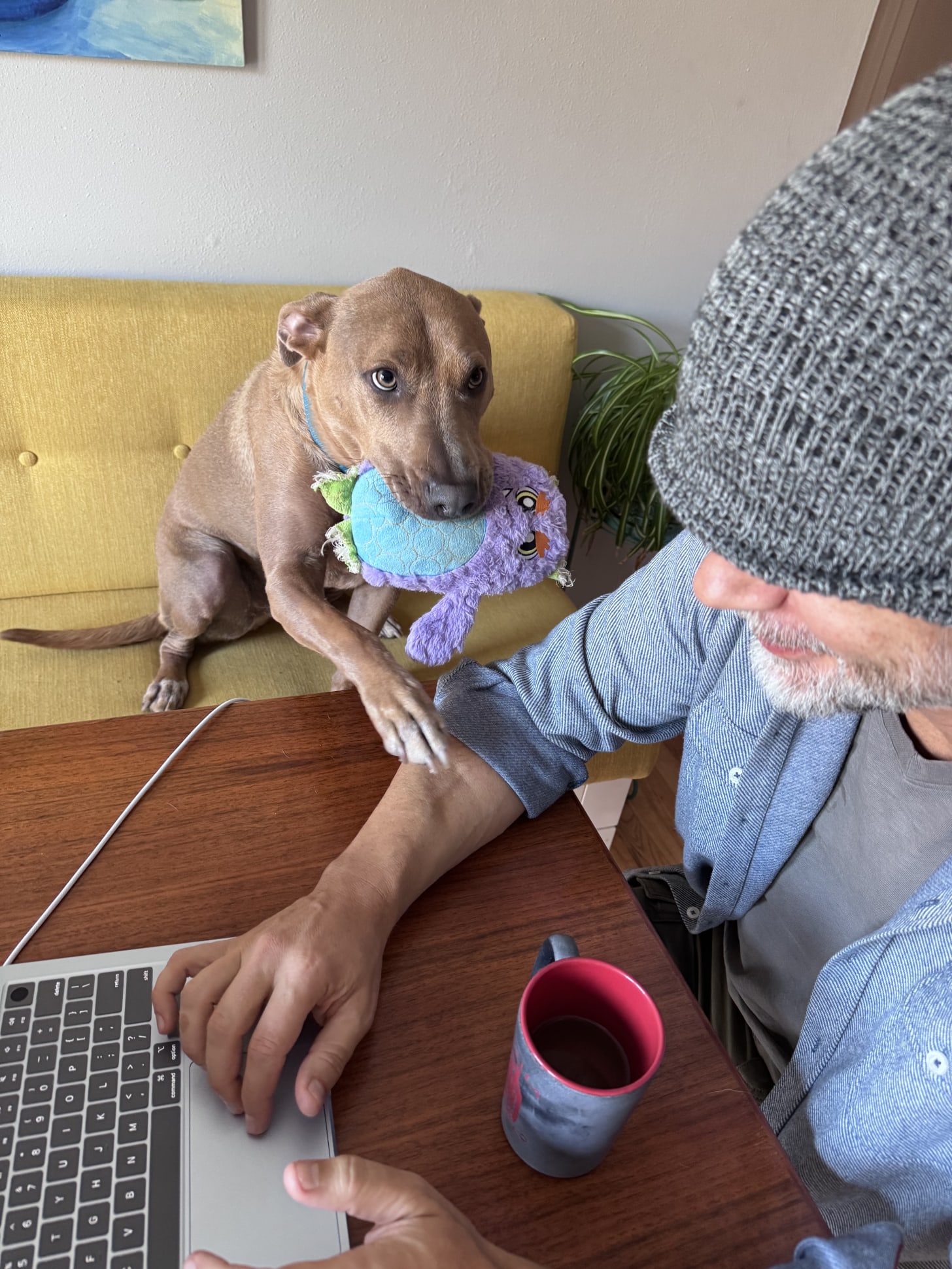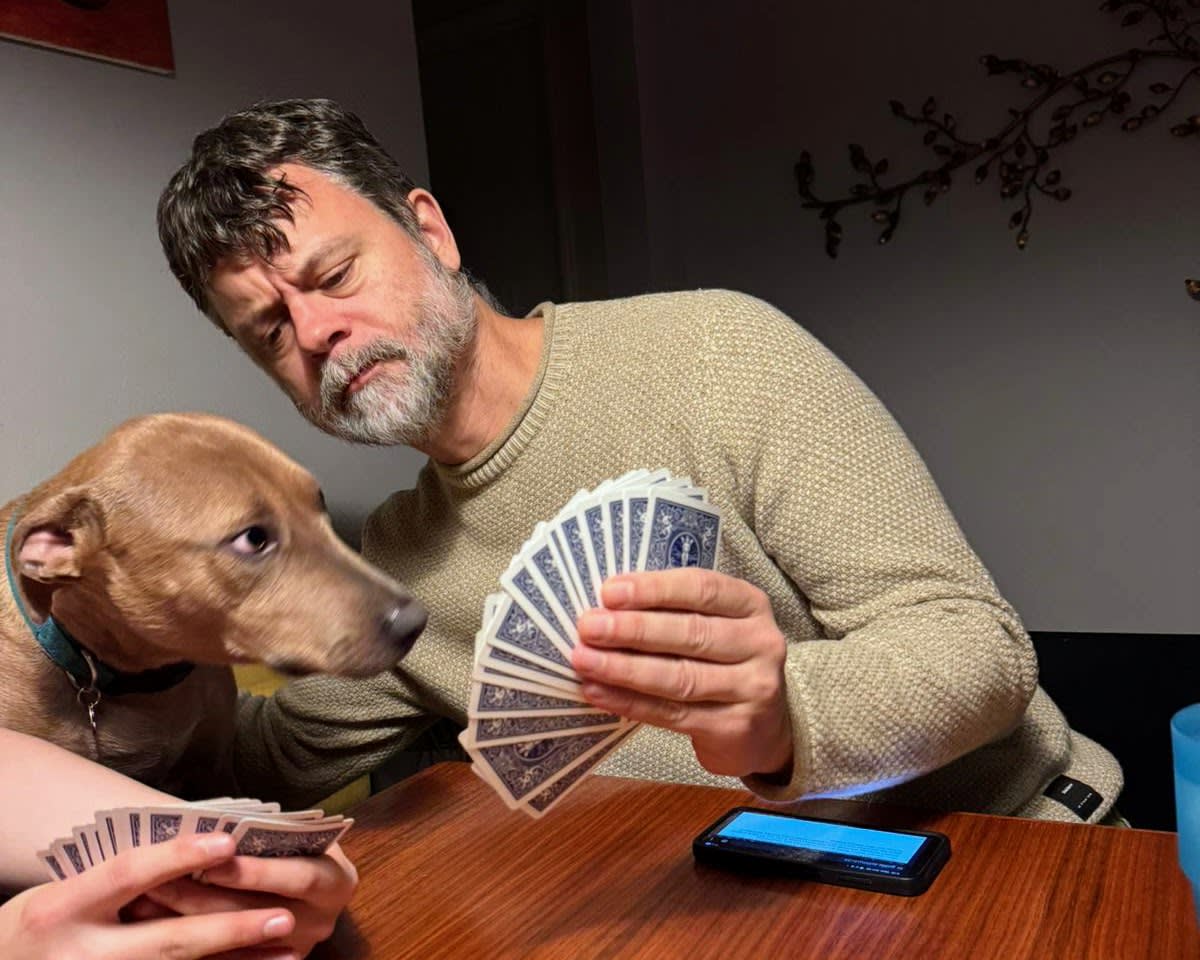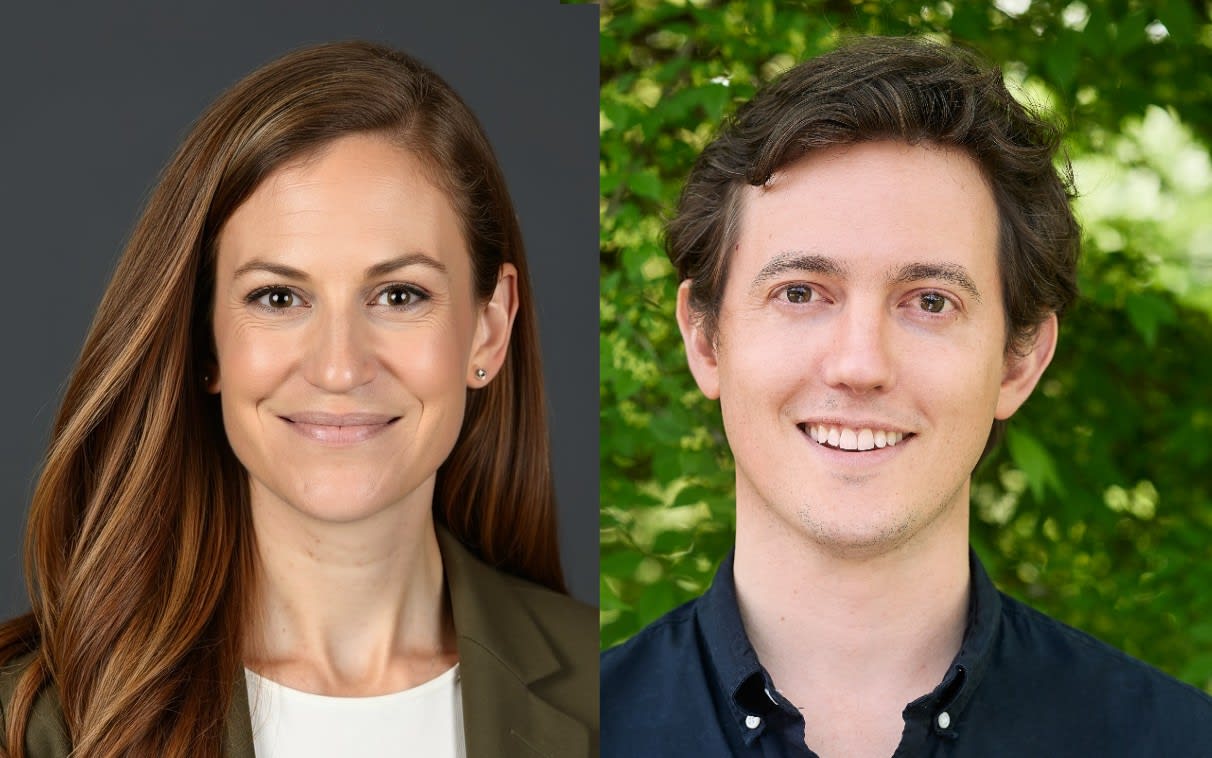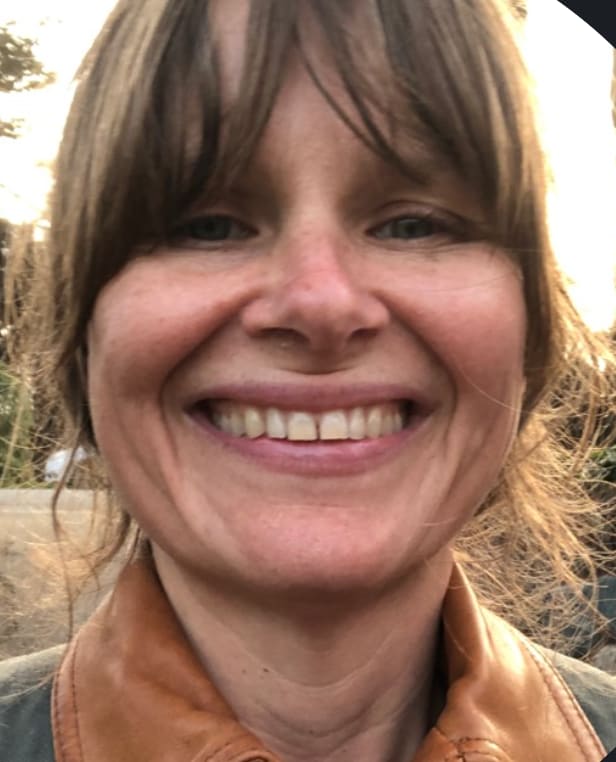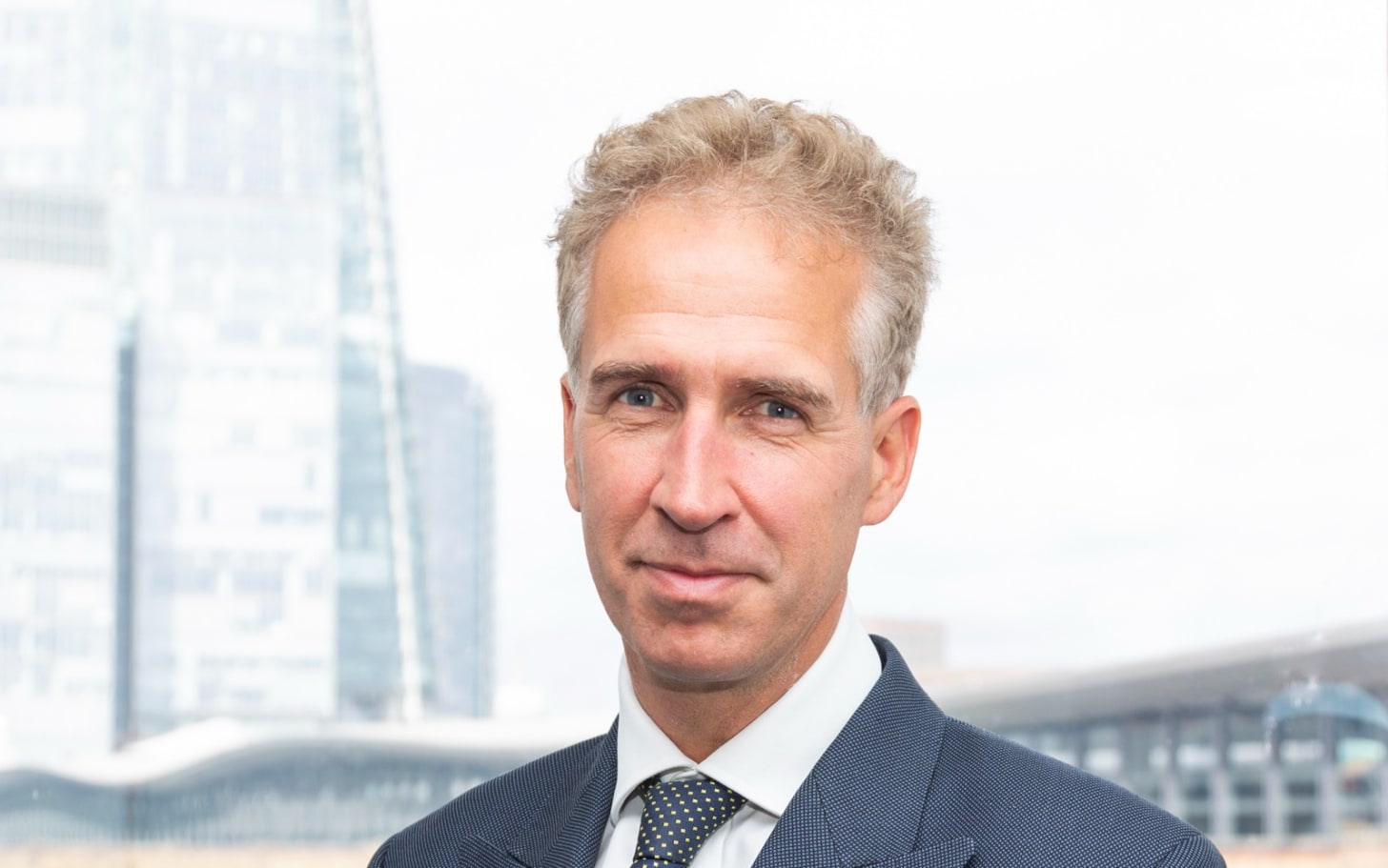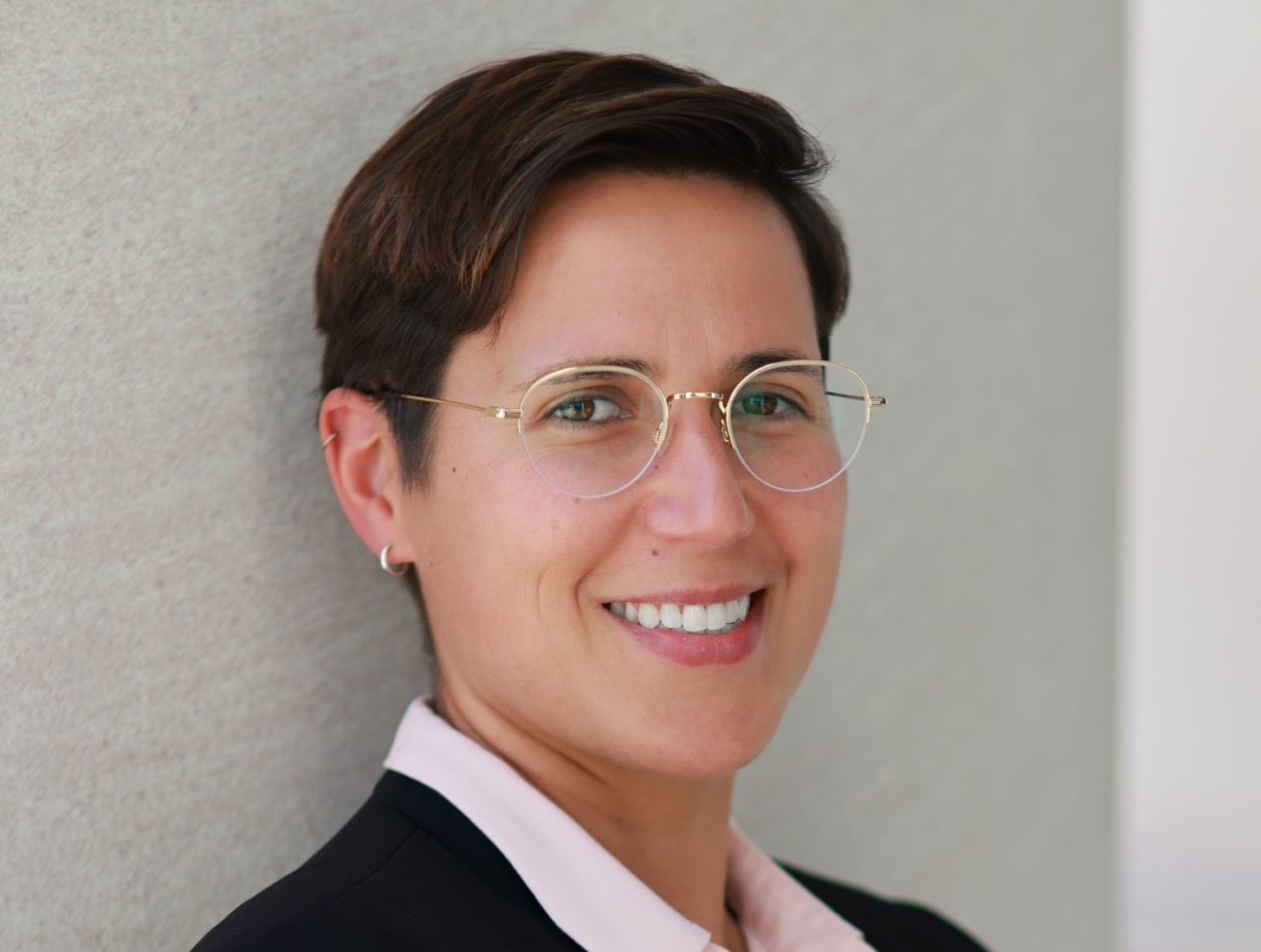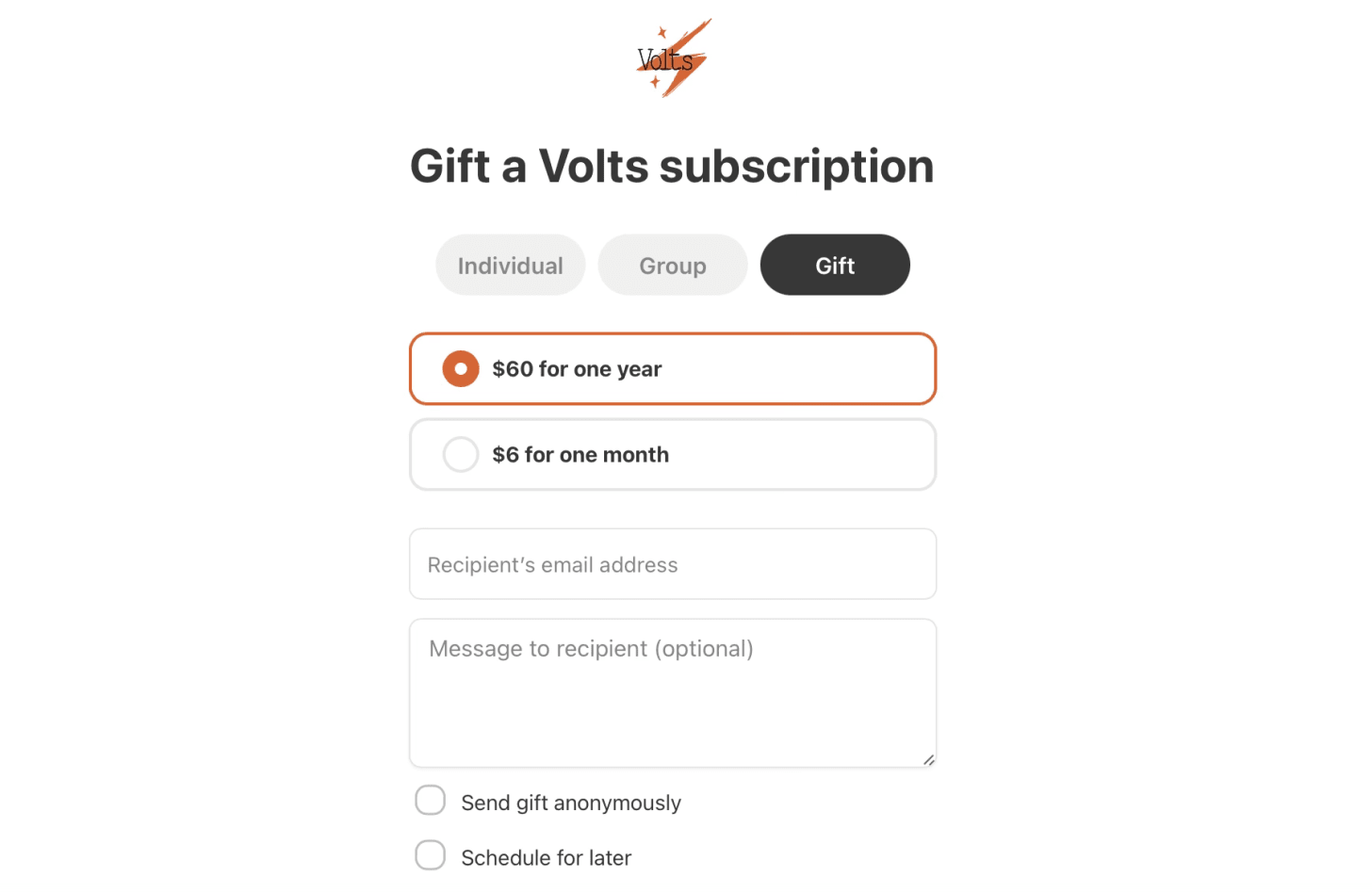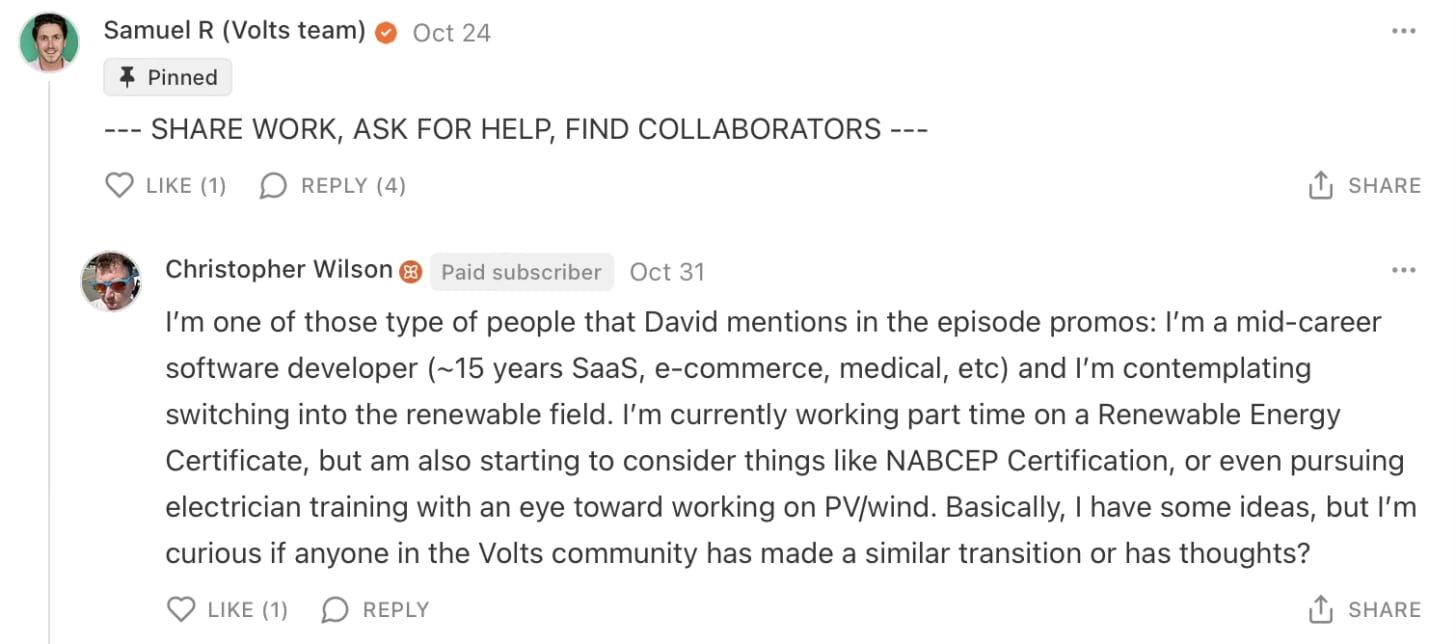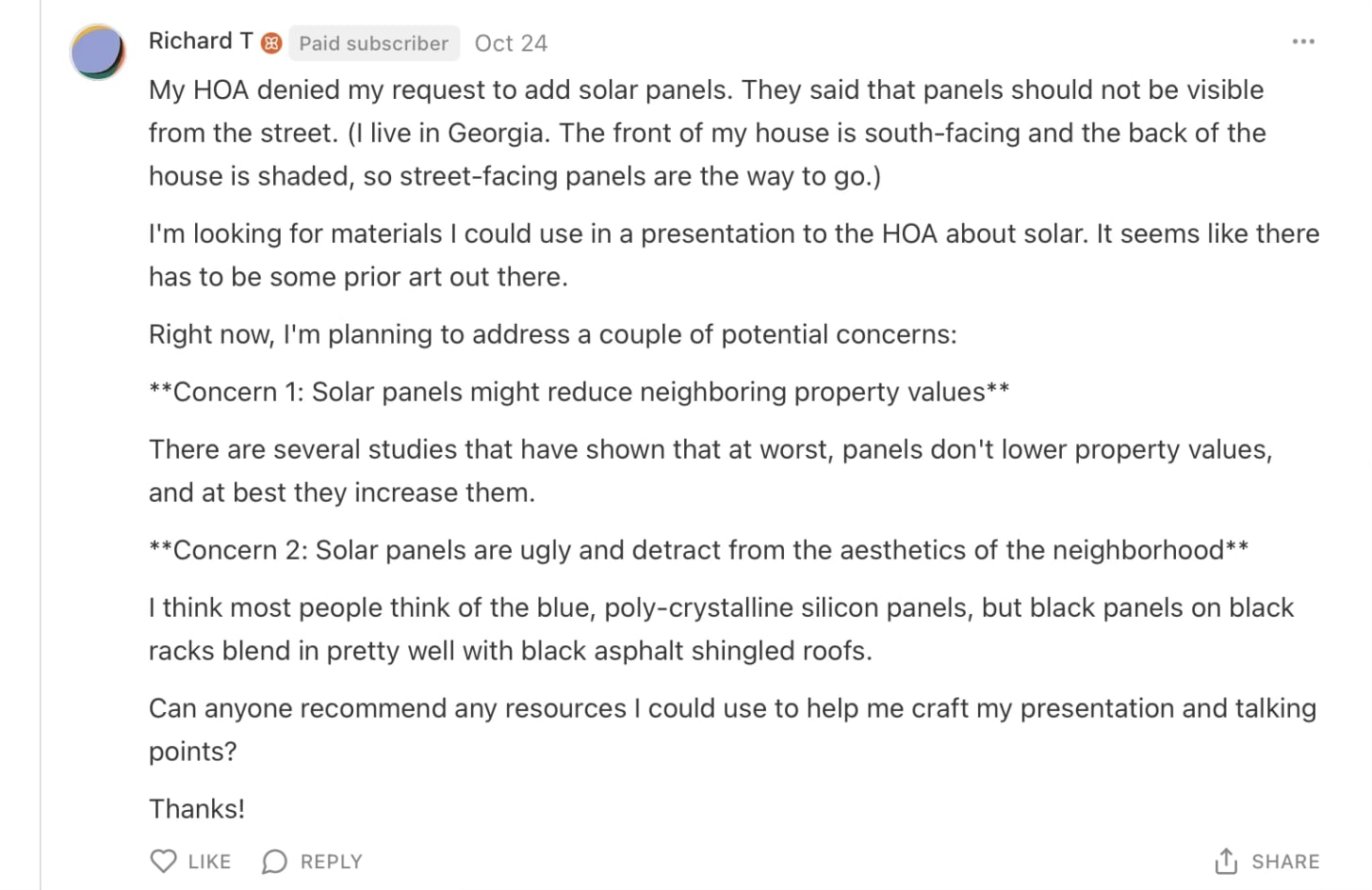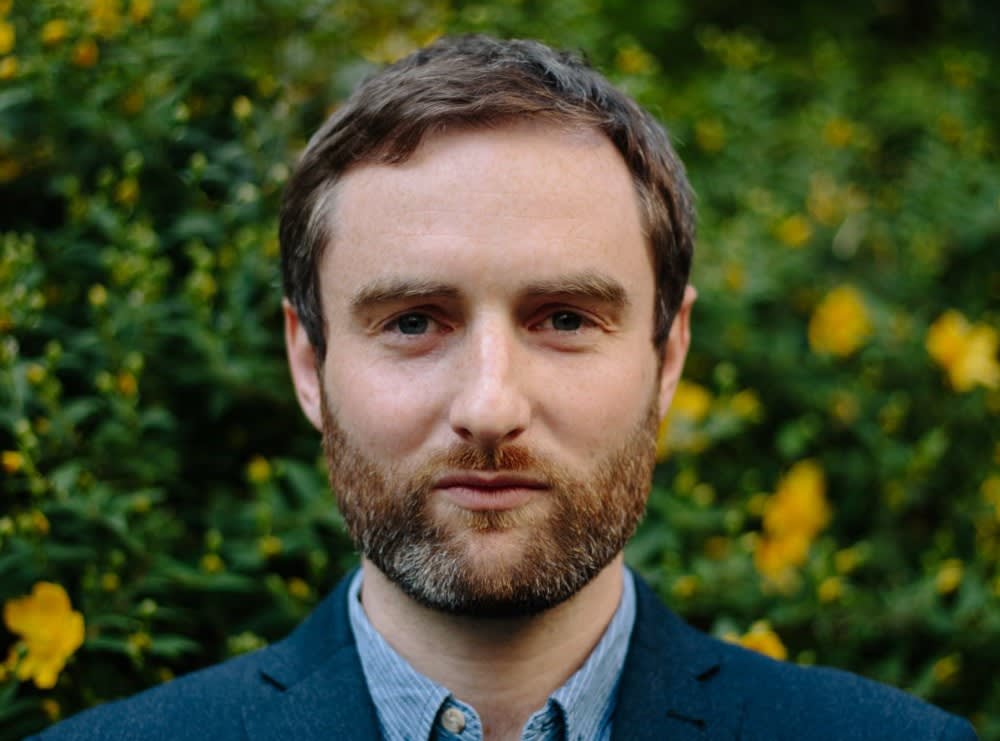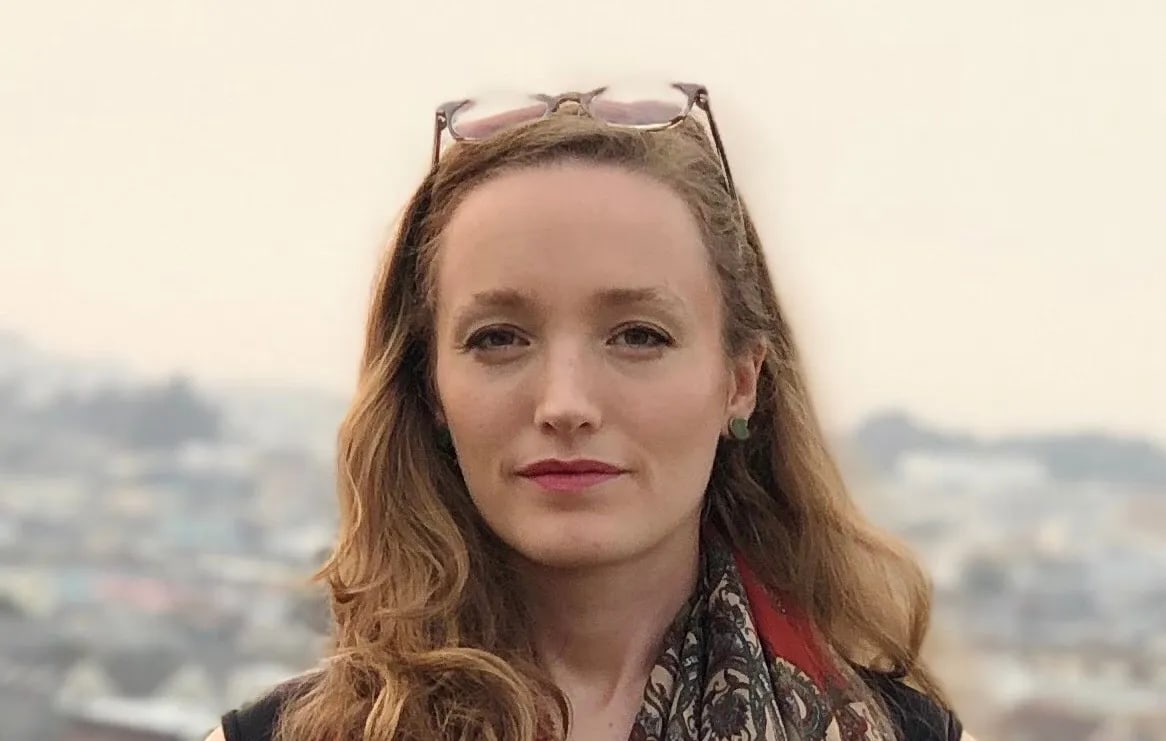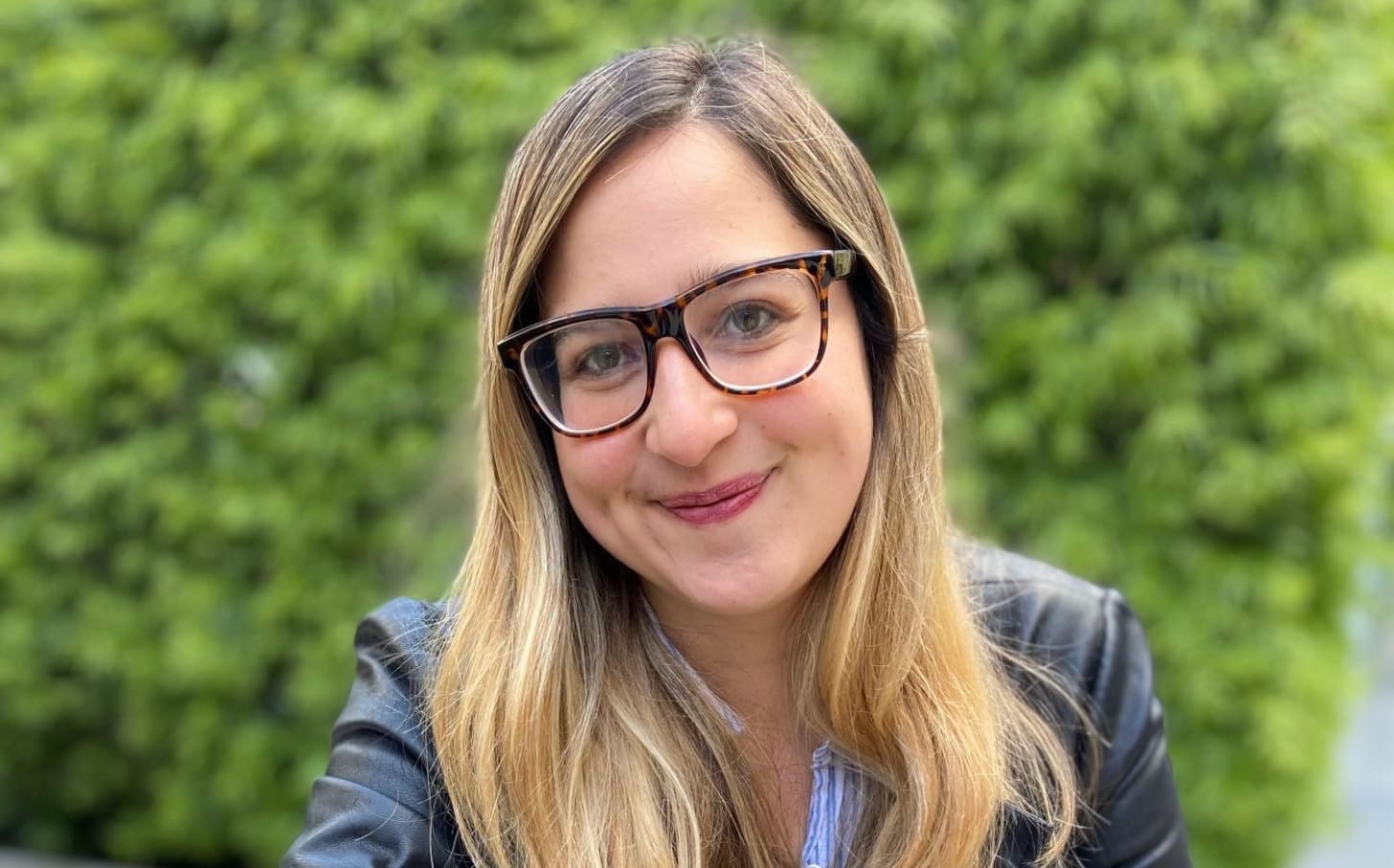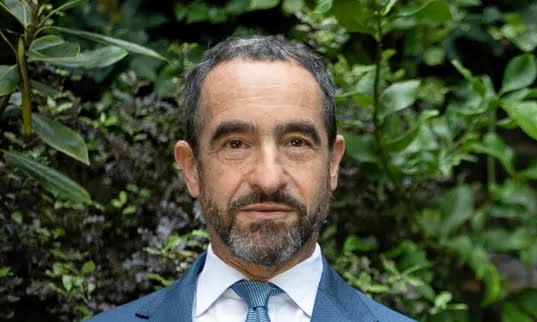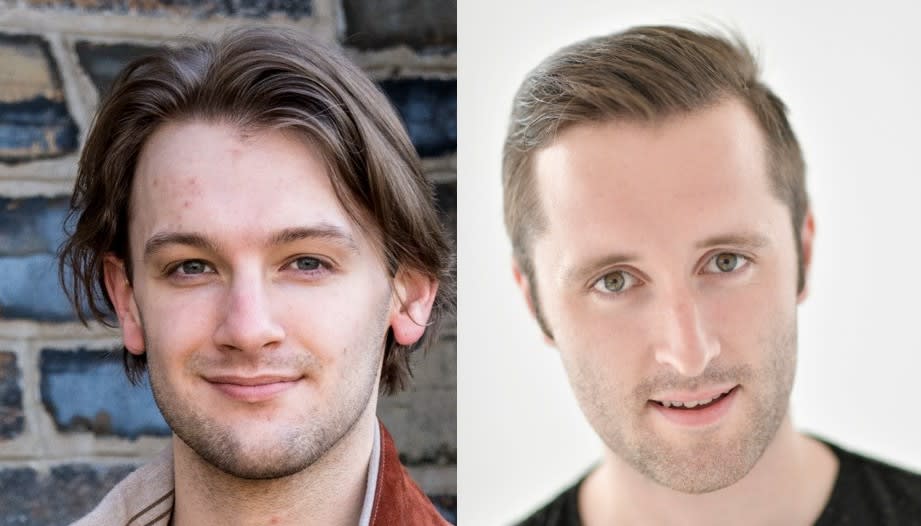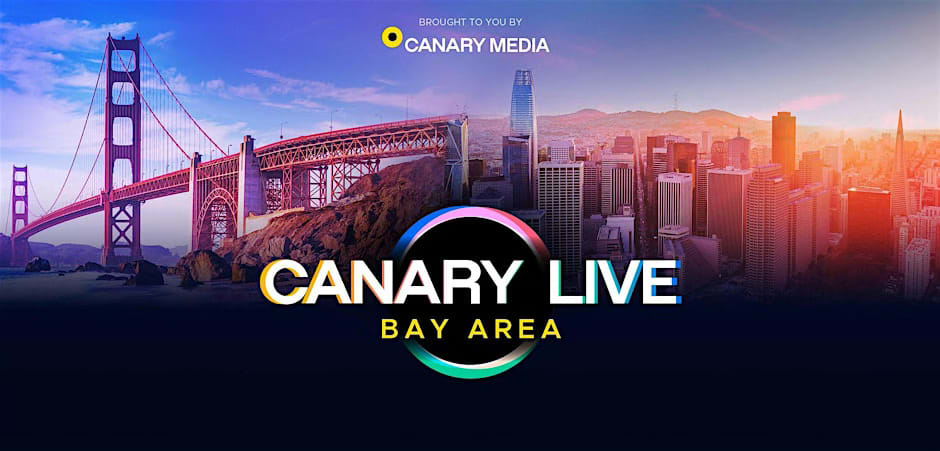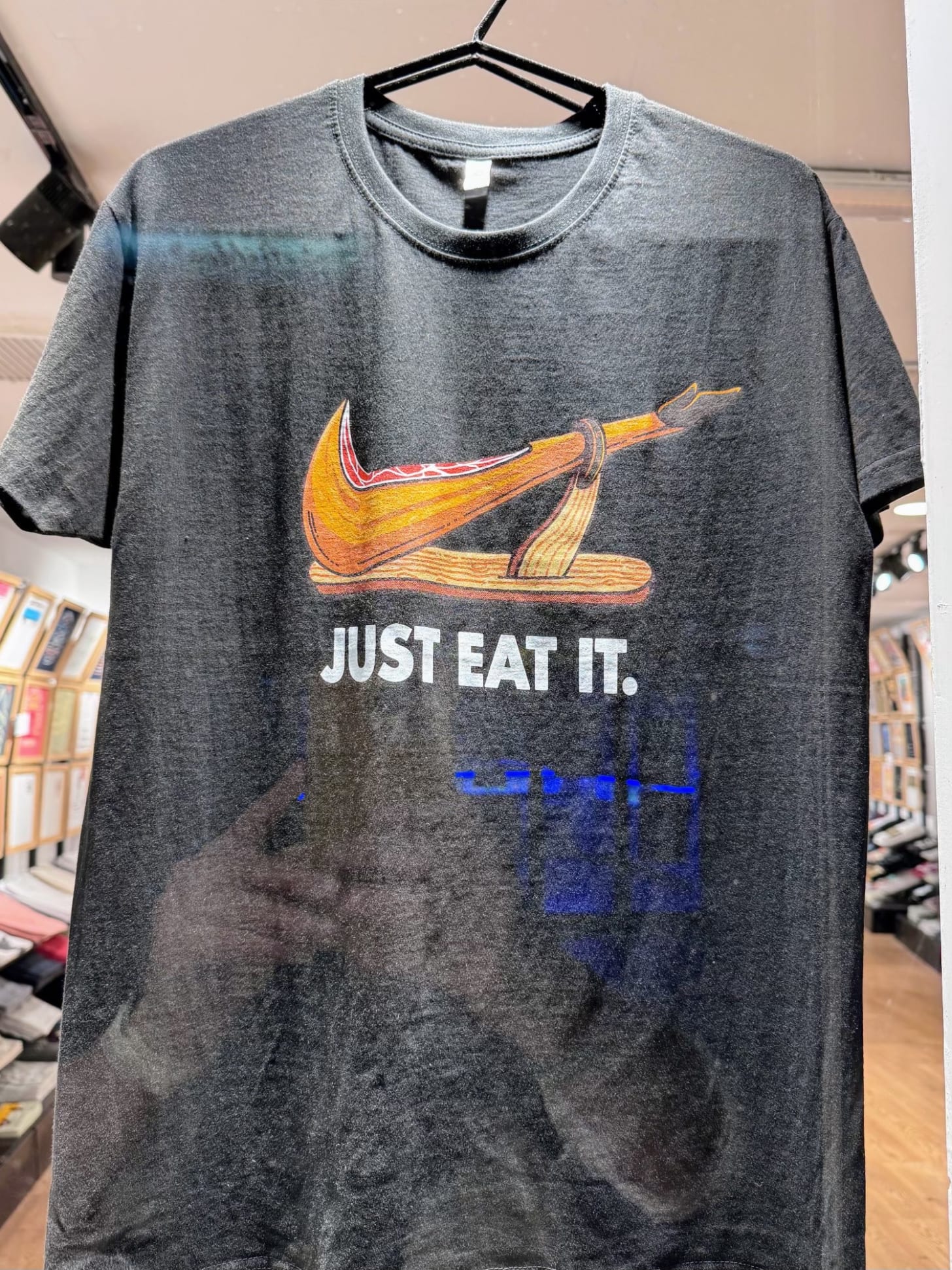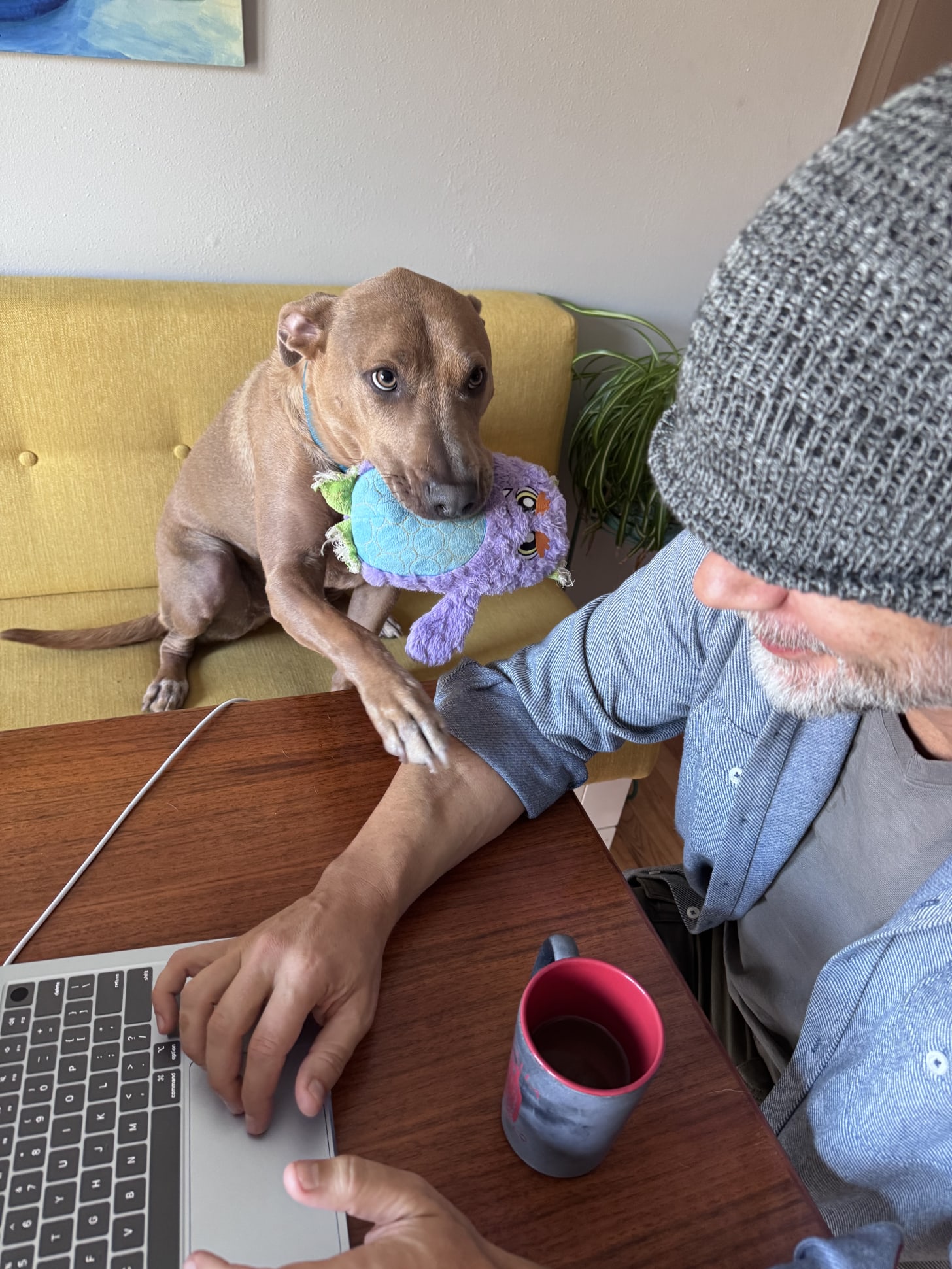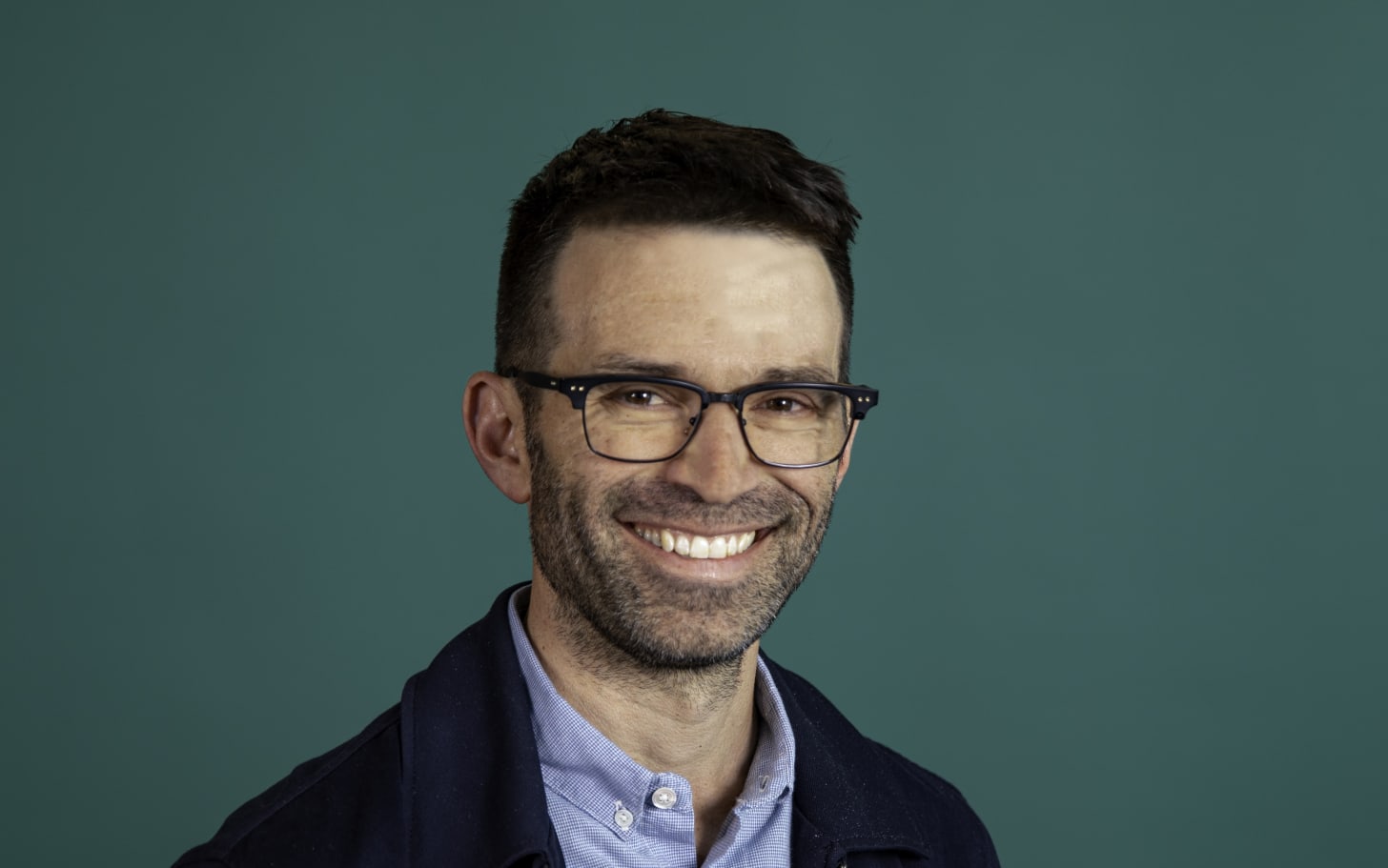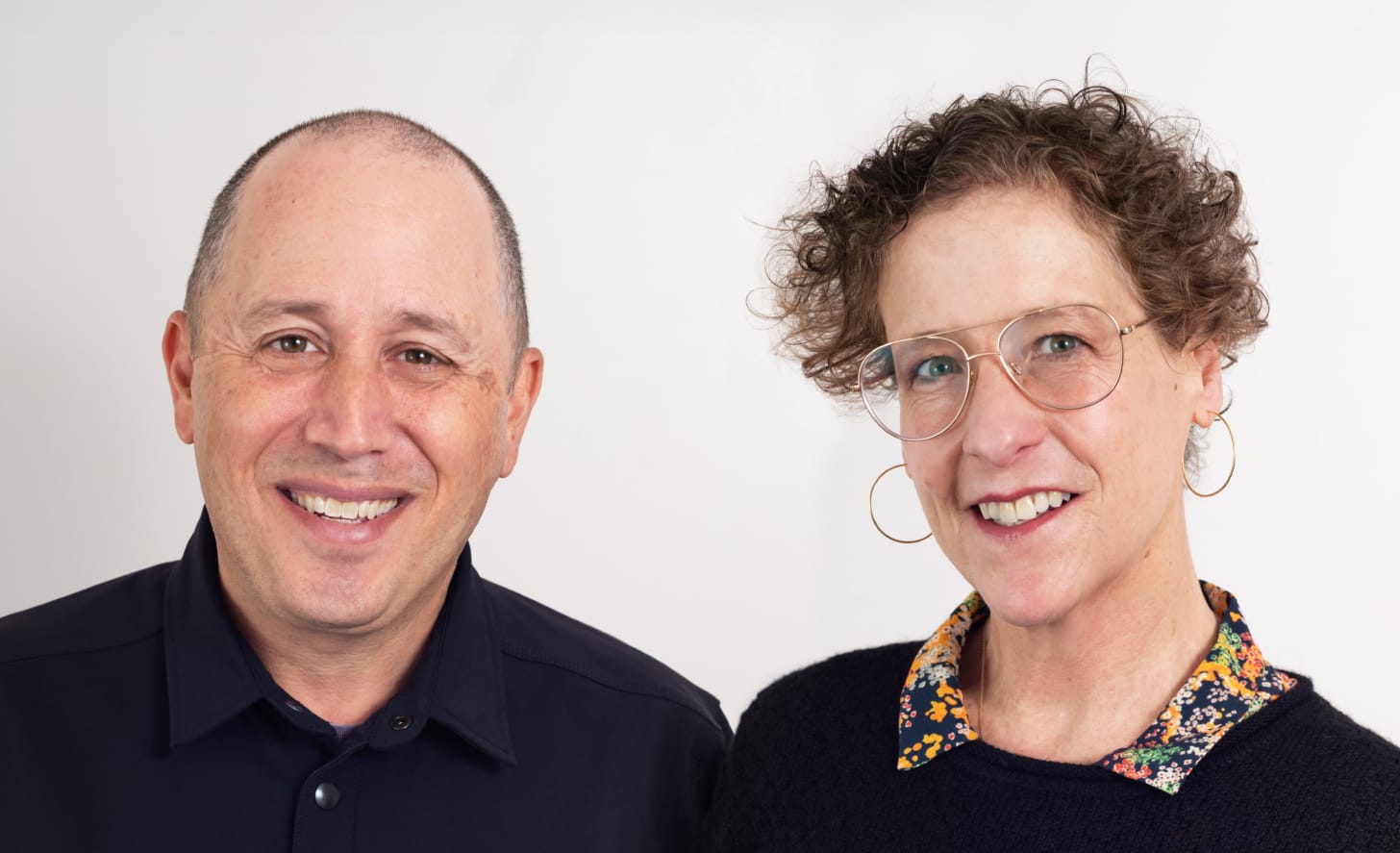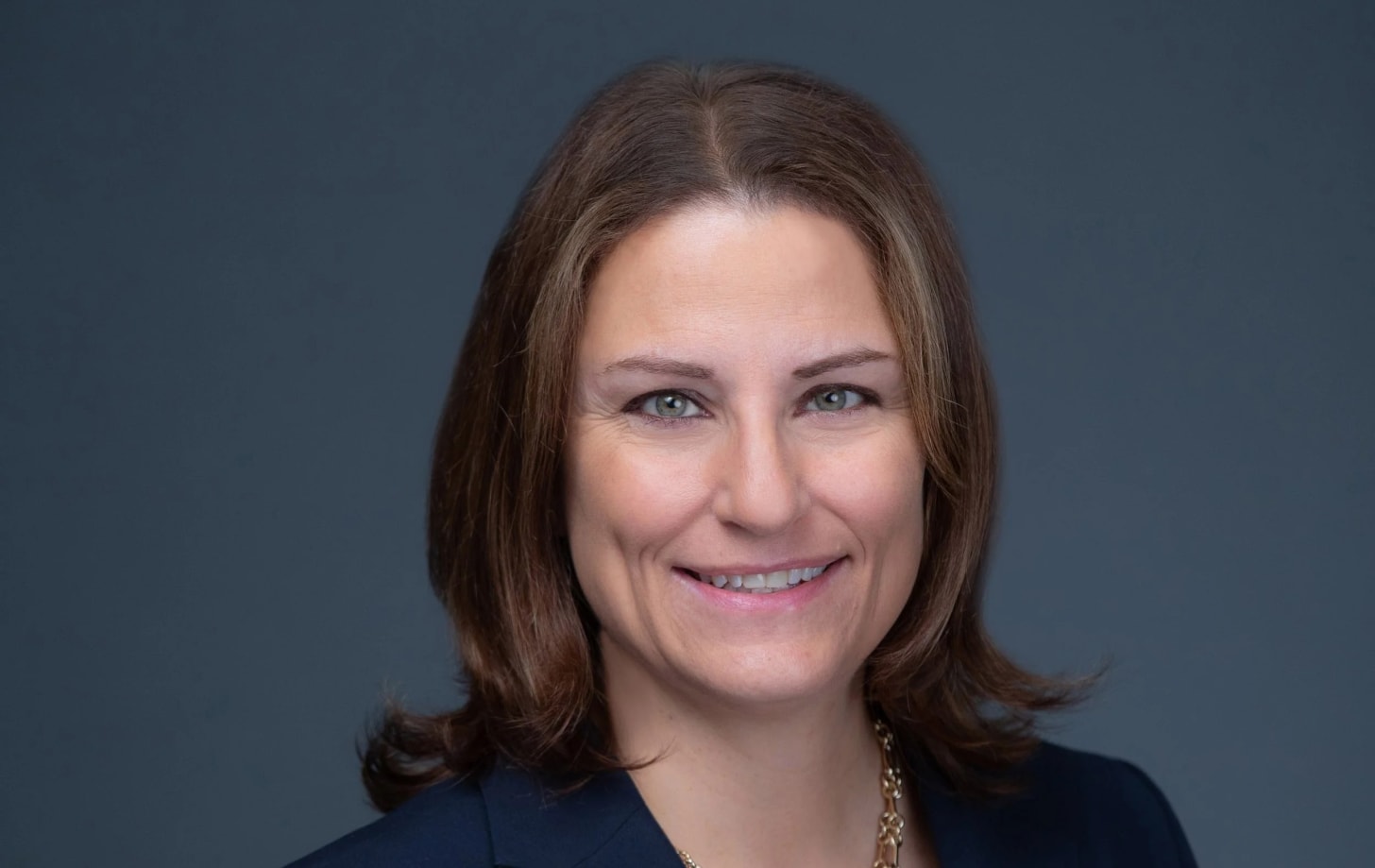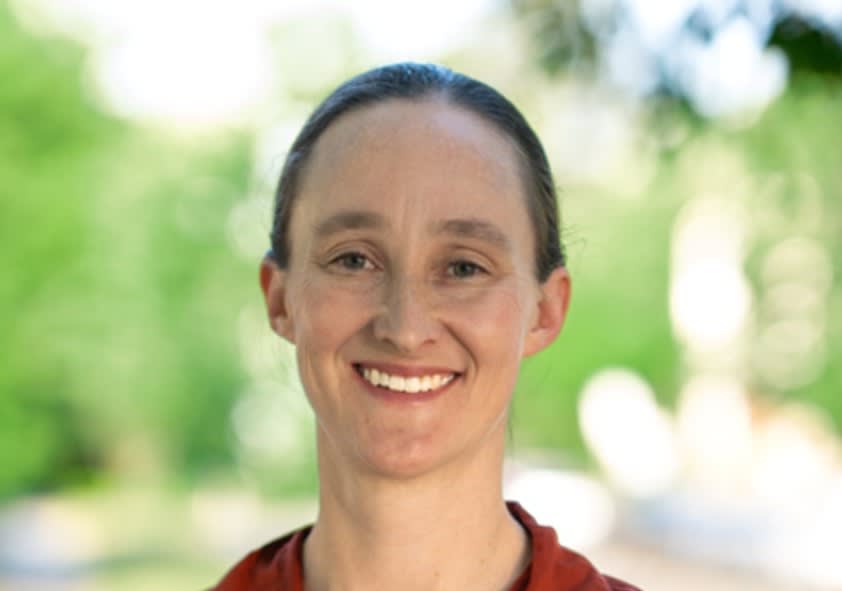Advocating for decarbonization in 2026
In this episode, Aliya Haq unpacks how her two decades in the climate movement have reshaped her view of what works. After six years working at Bill Gates’ Breakthrough Energy initiative, she has launched the Clean Economy Project, which will push for grid upgrades, market reforms, and innovation to make clean energy cheaper and more abundant. We wrestle with the politics of it all.
(PDF transcript)
(Active transcript)
Text transcript:
David Roberts
Greetings, everyone. This is Volts for December 12, 2025, “Advocating for decarbonization in 2026.” I’m your host, David Roberts. Aliya Haq has been bouncing around climate world almost as long as I have (though she, unlike me, retains her youthful energy and vitality). After graduating Yale in the early 2000s, she went straight into organizing, advocating, and researching for the climate movement, working with Greenpeace, the Sierra Club, and then eventually NRDC, where she spent six years as national climate policy director.
In 2019, she went to work for Bill Gates, leading policy work for his Breakthrough Energy project. As you may have heard, Gates has decided to shift funding away from climate and toward global health. Earlier this year, a group of veterans from Breakthrough Energy, led by Haq, launched a new organization. It is called the Clean Economy Project, and it is meant to carry on Breakthrough’s work, focused on building out the clean energy economy.
In short, Haq has been around. She has seen the climate fight go through several political cycles and witnessed the rhetoric and policy evolve. I thought it would be interesting to catch up with her about where her head is these days, where she thinks the climate movement stands, and what strategies she believes will be effective moving forward.
We discuss blocking things versus building things, the woes of hyper-partisan politics, and the types of energy initiatives that her new project will be pushing. This is a fun one.
With no further ado, Aliya Haq, welcome to Volts. Thank you so much for coming.
Aliya Haq
It’s great to be here.
David Roberts
Aliya, you and I have been at this for a while. I think we started roughly around the same time. I was looking back at your LinkedIn, it looked like you were coming out of college, launching into the environmental world. In the early 2000s, I did, and this is roughly when I got involved too, and I started writing for Grist. We have really had weird parallel careers. I came in older than you, we should say.
Aliya Haq
I appreciate that you’re recognizing my youthfulness.
David Roberts
Yeah, I know you are on the youthful side of people who have been at this.
Aliya Haq
It’s been a long time. But I’ve —
David Roberts
— Somehow stayed young through the whole thing. Amazing. You came out of college into what I would call the traditional environmental movement. You did your Greenpeace, etc., and then you did six years at NRDC, which is a classic, iconic, establishment environmental group. Then you went to Breakthrough. Now you’re your own thing. I’d like to hear some thoughts from you about how your thinking about the challenge we face has changed as you’ve gone through that experience. How your thinking about the road forward has changed as you’ve experienced the ups and downs and more ups and more downs that we’ve experienced in the last 20 years.
Aliya Haq
I’ll be honest, I feel it has been more downs than ups but —
David Roberts
Yeah, it’s five years of struggle, struggle, struggle, up, and then a month of down, killing it all over and over again.
Aliya Haq
Climate world is not for the faint of heart. You have to have some pretty thick skin and you have to really be willing to go through a lot and try to see the light at the end of the tunnel. That is my main learning on this.
David Roberts
An irrational optimism is helpful.
Aliya Haq
Yeah. I would say that my thinking has evolved many times working on this. I started really caring about climate change during the Kyoto Protocol days, which is a very long time ago. It feels like a deep cut. To say my first rallying cry was “7% below 1990 levels” really says a lot.
David Roberts
And that was our first spectacular failure, too. Just really set the tone.
Aliya Haq
The Byrd-Hagel resolution coming out of the Senate of 95 to 0 was a real resounding sense of US leadership back then. I have approached the climate problem from all angles. Even just starting as a kid, going into college, anything that had the word environment or climate in it, I would study it. I did research in college. I did teaching of young kids in college. Coming out of school, the reason I entered the environmental movement was I saw this really important lever of policy as the fastest way to make changes. We had to redo the rules of how things were working in order to see climate successes.
I still believe in that. I stick with the policy agenda. Policy change is what I think of as the core way to really solve this problem. But I have seen over the last couple of decades how the way we’ve approached it in the past is not fit for the moment today. The reason I say that is I’m a student of the environmental movement.
I will say that the road traveled between Greenpeace and the Natural Resources Defense Council is not well traveled. Those are typically very different types of people. If you’re willing to climb a smokestack, you’re usually not also the person who wants to write a report. But I’ve seen every strategy, I’ve seen every type of NGO in operation from the inside. What I can say that links all of those traditional legacy environmental groups, whether you are the super far-left activist or the more academic advocate type —
David Roberts
The white paper left.
Aliya Haq
The white paper center-left, exactly. Then you usually have come from a philosophy that comes out of the old conservation movement, the old pollution movement. I wrote a piece in Heatmap that was talking about why we need something that I’m calling the third front of climate action.
The first front, I think of conservation in the early 1900s with Teddy Roosevelt, Gifford Pinchot, really trying to preserve nature, wildlife, forests, and it was all about extractive industries. How do you balance environmental damage with economic output? How do you manage extractive industries — timber, mining, drilling?
Then that evolved into the 1960s, 1970s, Rachel Carson days fighting pollution for public health. How do we create safeguards? How do we make sure the air is clean, that water is clean, that we aren’t dumping toxics in communities? That led to the whole wave of environmental statutes that we know and love today: Clean Air Act, Clean Water Act, Superfund, etc. Thank God we had those movements. They were incredibly important.
David Roberts
We’ve been coasting on the Clean Air Act ever since.
Aliya Haq
Absolutely. I gotta say, I’m really glad that the Clean Air Act is there and has been doing a great job of keeping our air clean. The smog of London at the turn of the Industrial Revolution and Beijing — it can be really bad. We need to protect that stuff very much. We can’t take that stuff for granted, which many folks might take for granted.
Now, that said, I think of climate change as a much different problem than those previous environmental issues that we have tackled with great success in balancing industry and harm, figuring out where the right regulation is going to make sure the pollution is not harming our public health.
Climate’s fundamentally different. Climate comes from every single activity that requires energy on our planet. 80% of our primary energy is coming from fossil fuels right now because it is relatively cheap, relatively abundant, easy to move around. There are a lot of reasons that our industrial revolution was built on the back of fossil fuels.
That said, to really tackle climate, that means we can’t get rid of energy. Slowing down energy production is pretty tough. We’ve really approached climate change as slowing down or stopping emissions, similar to the Clean Air Act, or slowing down or stopping fossil fuels, which is similar to the conservation movement.
Those are things that I have personally fought for many times over in the last two decades. Today I’m looking back at this and I’m thinking, I don’t think we’re doing it right. I think we can fight for the same things, but think about it differently where it’s less about this crisis in front of us, which I feel deeply and I’m very motivated by stopping that crisis, but a lot of folks are not.
Also, there is this incredible economic opportunity ahead of us that did not used to be there. Because solar and wind have come down these learning curves, because there is zero marginal cost, if we were better at deploying these things, we would be winning the climate fight much more quickly. If folks were feeling the shared prosperity of those industries coming up, we would be building more political power. I think that the traditional environmental movement has not thought about it in that same way.
David Roberts
Let me stop you here and ask about this then, because this is the juncture here. There’s one juncture that I’m very interested in. I totally agree that climate change came to American culture via environmentalism, via traditional environmentalism. Everybody bashes traditional environmentalists now, but nobody else took it up. It’s not that the rest of us were killing it. But anyway, they took it up.
I think you’re right that it got slipstreamed into the conventional bad corporate actor, point source pollution. The solution is to pass regulations requiring the reduction of that point source pollution. That’s the iconic environmental — the way environmentalism worked. It got slipstreamed into that. I think you’re right that it’s not fitting.
But there are two ways you could decide to move on from that. One is to just say that’s not working politically because, politically speaking, people don’t care that much about climate change. Most people don’t. Politically speaking, people aren’t going to want to hear about less or cutting back or higher costs. Politically, we need to lean into optimism and forward-looking. That’s a political case.
Then there’s also the substantive case, meaning not only was that politically fruitless, but it was conceptually wrong — substantively wrong. I’m just curious, is it one or the other of those or is it both for you?
Aliya Haq
It’s definitely both for me. Let’s take cap and trade or carbon taxes, which if you were to tell me that we were going to have a $50 a ton carbon tax tomorrow, I would celebrate in the streets. I would be thrilled to see that. That said, politically, that’s not super useful. Also, that wouldn’t solve all of our problems. Even a $100 a ton carbon tax wouldn’t necessarily solve all of our problems.
One difficult thing is that there is obviously no silver bullet to solving these issues. Using the Clean Air Act to regulate greenhouse gases, I think was a smart idea to try. I do not know that it has worked super well and I do not feel confident that it will continue to work given the current —
David Roberts
Everyone involved viewed it and said publicly that it was a second-best or third-best solution at best. The whole point of threatening to do it was to try to bully Republicans into signing Waxman-Markey.
Aliya Haq
Exactly. The big bad EPA is gonna come after you if you don’t do cap and trade. Then we tried to do that.
David Roberts
In very conventional Republican fashion, they said, “Screw you.” Then when the EPA thing came up, they said, “Screw you.” They just fought. They were not persuaded to make concessions by these sorts of strategists, unlike, say, people on our side tend to be.
Aliya Haq
The thing I will note, though, when you dial the time machine all the way back to 2008, 2009 Waxman-Markey era — when I was — it was 2006 or 2008, I spent a lot of time field organizing in communities, flying around the country. We had two dozen organizers in purple districts. It wasn’t a partisan issue yet. Our entire strategy back then was to get Republicans and Democrats in purple House districts to compete on who had the best climate plan. Going into 2009, what was supposed to be a golden era of President Obama, Nancy Pelosi as the speaker, and Henry Waxman as the Chair of the Energy and Commerce Committee, who had replaced John Dingell, who is just one of the most hilarious members of Congress that there ever was.
David Roberts
I remember all of that quite well.
Aliya Haq
But it was Democrats John Dingell and Rick Boucher who were not helpful to us on moving cap and trade forward. It was really about the economics. If you are representing a coal district in Virginia or an auto district in Michigan, then back in 2008, 2009, you were not excited about a cap and trade program or a climate action.
David Roberts
No one cares about this anymore, but I’m nonetheless going to say it. There were enormous subsidies for coal companies and coal workers in Waxman-Markey. If they had passed that bill, the coal industry would be better off today than it is. The whole point of Waxman-Markey was to start from the middle out, to be reasonable, to appeal to businesses. That was the center — out strategy.
Aliya Haq
It was to buy off the coal state Democrats who they would not otherwise have been able to get to vote for the bill. The real key, though, is that I would say in that strategy — the pricing of carbon strategy, which I think is still a tool in the toolbox. For a long time, folks who have rabidly cared about climate change thought about carbon prices as the way to do it. The silver bullet. “If we just price carbon, then it will all fall into place.” I do not know that that is correct.
I think it is a helpful accelerant. It would help realign better incentives to price the negative externalities. One of the things that was super interesting about moving into the Breakthrough Energy world and seeing how clean tech startups work and how these innovators try to get off the ground — it is not just the price incentives that are the problem. There are a lot of other regulatory barriers. There is a ton of stuff that is holding back new innovative things from being able to take over an incumbent technology.
David Roberts
I feel weve all learned that together. Although I will say, and then I will let my Waxman-Markey obsession go and we can move on.
Aliya Haq
I love this stroll down memory lane.
David Roberts
There were three big sections of Waxman-Markey. The carbon pricing was one section and it was a relatively modest carbon price. The other two sections were industrial policy type stuff. Although the bill got discussed as a carbon pricing bill, that was only one part of it. Arguably, if you had passed the bill, it would have been precisely that kind of low-level background accelerant that we want. The idea that it was just all carbon pricing, that was a distortion at the time and I think it is a distortion ever since. It was a much more diverse strategy than it gets credit for.
Aliya Haq
That’s fair. At the time when Waxman-Markey was happening, I worked at Greenpeace, which opposed the bill because it had carbon capture and storage in it, not because —
David Roberts
Perfect.
Aliya Haq
Which is funny. Although during that time, we were quietly still trying to be helpful to it passing, even though Greenpeace had to publicly be opposed to it. I wrote a report on Koch Industries and the funding of climate denial, trying to help create the —
David Roberts
It really exposed the dysfunctions in the left, in the environmental movement, and in the left more broadly. The whole Democratic coalition, honestly, nobody was on their own side. Everybody hated it. The centrists had their reasons for hating it. The left had their reasons for hating it. Environmentalists had their reasons for hating it. Republicans had their reasons for hating it. Nobody’s on the side of the boring mainstream. In your Heatmap piece, you say people think of climate change as a crisis to contain — when really it’s a competition to win.
This is a very common move these days. It is very popular to say, instead of doom and gloom, let’s think about all the possibilities for clean energy and economic dominance in the 21st century, etc. I get it, and it makes sense to me, but I do worry a little bit, because even the way you phrase it, “people think of it as a crisis when it is really something else.” It is a crisis still, is it not? It is a competition to win, it is an opportunity, etc. But it is also still a crisis, isn’t it?
Do you get worried that this pivot — I know when you make this pivot in your heart, you still care a lot about climate change and it’s still ultimately what’s motivating your work. But I worry that when this pivot gets popular, it becomes a popular line. Do you worry about giving people who didn’t really want to worry about climate change in the first place permission to not worry about it? In other words, do you worry this pivot is going to be too successful, and people are going to be like, “All right, I’m not going to worry about it anymore,” because that seems like what’s happening?
Aliya Haq
The way I think about these things is people don’t have to have the same motivations if we can agree on the same course of action. In a mini version of this, there’s a story from way back in the 80s where there were some nerdy scientists who really wanted to save this endangered salamander. They were really worried about this particular watershed and how it was being developed. They went out trying to save the salamander — nobody cared.
Then they realized, they talked about the clean water coming out of the watershed and how the development was affecting the water. Suddenly, everybody cared about it and then they were able to get the protections they wanted for that space. Is it a problem that they didn’t care about the salamanders? They did it for the water. Probably doesn’t matter.
I personally care about the climate crisis. In some ways that is a value judgment. Part of it is a huge amount of misinformation and a lot of it is just BS. Some people might have a higher or lower discount rate in how they think about whether their life is more important or their grandchild’s life is more important, or if their life is more important or someone in Bangladesh is more important. We can debate the philosophy of that all day long, but who has the time for that? Why don’t we just figure out why?
It turns out some of the work I did back in the day on climate communications, one of the things that I looked at was when people support the solution, then they are much more likely to agree with the problem. If the solution is good for you, then suddenly you are much less likely to protest that the problem exists.
That’s where I’m at, where I see that we have made incredible strides in clean energy. The fact that wind and solar are incredibly cost-competitive is something to celebrate. The fact that there is misinformation that they are expensive technologies for the elite is something we need to figure out how to unwind.
The other thing that I’ll note is in working with a lot of labor groups, I can see how the solar industry developed with poor labor standards and high turnover. Low-wage jobs where people did not see a career path where they could support their families have really held back the solar industry. People don’t feel there is a shared prosperity to that. They feel it is effectively another industry.
I think of this as an economic piece where there is this opportunity not only to rebuild communities in order to move clean energy forward, but we also need to figure out how you make those communities stronger, how you build wealth in these communities, how you make sure that prosperity is shared. That is the really interesting stuff around this work that I do not think we have ever really brought together in a clear way. There are lots of groups that are thinking about community development, that are thinking about economic inequality and the climate. People are on another side. We are a different breed.
I’m really interested in how we bring those pieces together. I am very fatigued by partisan politics and Democrats versus Republicans. I’m seeing this realignment now where people who feel left behind, whether they voted for Donald Trump or Zohran Mamdani, are feeling they’re not secure in their future. They don’t know if they’ll be able to retire. They don’t know if their kids are going to be better off than they are. Climate is a part of that picture and we need to figure out how to make the solutions that we’re putting forward congruent with the rest of that.
David Roberts
I’m going to argue with you about partisan politics later, but I want to ask you, the abundance thing, whatever you call it, book critique, movement, chatter, I’m sure you’ve been following that to some extent. To some extent it seems obvious that on the forward-looking side of things you are aligned with the abundance movement. You want to do permitting reform, make it easier to build stuff, build, build, build, etc., which I also am, with some reservations. But what about the critique side of it? Part of the abundance critique is that the green groups themselves, in part through this historical habit of fighting things, stopping things, and the lingering degrowth vibe around environmentalism —
Aliya Haq
The Paul Ehrlich model.
David Roberts
Yeah. That they are slowing down solutions, that they have not just become not helpful but counterproductive. Do you share that critique of the green groups and what’s your take on — it’s very easy from a distance to lump the environmental movement as one thing and characterize it as degrowth hippies in Birkenstocks. But you and I know we’ve been around this our whole lives. It’s very varied, a lot of different strands involved. What’s your take on that critique and how accurate you think it is at the moment?
Aliya Haq
There is some truth to that critique, but it is not the caricature that has been put forward. Alongside many beloved friends and colleagues, I helped get the Inflation Reduction Act passed. One of a million people who are part of that effort. I joked after, shockingly, we won that after thinking it was dead for two full weeks. I joked that all of our friends who got this historic piece of legislation passed will now turn around and fight every project that we try to get to move forward with it.
That was not totally incorrect. I did have a lot of come to Jesus conversations with good friends saying, “Guys, we really need to build more transmission for us to be able to maximize these tax credits, we really need to be able to build these projects faster.” It’s really hard for some of these groups to prioritize transmission over stopping LNG exports, for example, which was a literal political deal that we were working through back in December. That’s the thing where they certainly are not accelerating the climate solutions that we need to accelerate quickly enough.
There’s a lot of soul searching happening and I’ve seen a lot of good movement in those groups going in different places. Each one of those groups has hundreds of people, all of whom have their own brains and think different things. The question is how can they align and move forward when many of those folks got into that business with a really strong degrowth mindset and they were not originally organized around this concept of building things quickly and saving the climate crisis. They were born out of a different movement.
David Roberts
Some part of me wonders, is there something perverse about trying to force them into this new mold? Why does that movement have to be this movement? Getting back to your new movement thing, it is not obvious to me that these necessarily should be in the same basket. Maybe people who want to preserve the salamander should have their —
Aliya Haq
Go ahead and do that.
David Roberts
They should have their movement. It’s bizarre that that movement is also supposed to be the build thermal batteries movement. It’s just not obvious.
Aliya Haq
The one ring to rule them all. That’s absolutely spot on. We do need to fight for clean air and clean water and maintain these. It’s really important. Still a thing and if we let those things erode, we’ll suddenly feel sorry about that. It is really important for those environmental groups to maintain the line on a lot of those pieces. To the extent that some of those groups are more Blockbuster Video and some of those groups are more Netflix — some might be able to adapt from their DVD mailing business into this thing, some of them are just not going to be able to make it. That’s a question that is up to their funders and up to their heads of strategy of how they meet this moment.
A lot of those groups were built in the 60s and 70s. Sierra Club is much older than that. They come out of conservation, but my alma mater — both Greenpeace and Natural Resources Defense Council, NRDC — came out of the early 70s and were born out of this more safeguarding of public health place. That’s great. They came out of a place that had three or four channels on television, three or four news anchors, each city had a major flagship publication. The communications landscape was just so much more monotonous.
David Roberts
I’ll throw one other thing in there which I think is huge — we’re going to return to later. They came of age and were formed in this postwar era of consensus in US politics. We were much less — the parties were much more mixed back then and there was much more concern across the aisle about these things back then. I think a lot of these groups born in the 70s and 80s viewed their nonpartisan status, their C3 status, as sacrosanct — this is not a political issue.
Now, of course, that has changed radically. Polarization has changed everything radically. This pretense that it is not a political issue, I think, is nonsense. We are going to get back to that. Let me ask you, pivoting toward this new front, this new movement — what do you even call it? I do not know, the build clean energy movement or whatever.
I have some questions about that because I think there are reasons that the environmental movement evolved around stopping stuff. It’s not just entirely the philosophy. It’s also that stopping stuff is easy to communicate. It’s easy to get people worked up around. It’s easy to get attention for that kind of fight. “Stop big bad corporation from despoiling things” is a fight where everybody immediately knows the players, the dynamics, we all get that. It’s easy to rally around the flag to do that.
But when you turn toward supporting stuff, supporting building of stuff, the political economy of it becomes much more complicated. There are trade-offs involved, different priorities — build more of this or this or — you frequently mention TerraPower, talking about the alleged nuclear renaissance. I get that. But it is also the case that that is a private company doing things private companies do, which sometimes involve bad things, sometimes involve lying to regulators or dumping waste or whatever. All the things corporations do. I would be nervous about a movement that becomes or becomes seen as the advertising wing of the private energy sector. I worry about that.
The dynamics of building a movement around building stuff seem complicated to me. Build what stuff? Where and when? Those are substantial disagreements. Do you think really that this sort of third front can be a movement? As we think of a movement, is there enough unifying it to make it a movement?
Hey there everybody. Don’t worry — I’m not going to tell you about a new mattress or push a credit card on you. This isn’t an ad. There are no ads on Volts. It is supported entirely by listeners like you.
If you’ll indulge me for a second, I’d like to ask for your support. I started Volts because we’re all surrounded by depressing news about climate change and misinformation about clean energy. It’s never been more important to share the stories of the real people on the ground doing the real work of transition — and all the ingenuity and courage and public spirit they are bringing to it. People are hungry to hear these stories, to learn from and find inspiration in them. I’ve heard from people who change majors or careers after hearing episodes of Volts. People using it in classrooms and community groups, even state legislators who have passed bills inspired by specific episodes.
Sharing these stories matters. It makes a difference. If you have found value in it and want to help me continue doing it, I hope you will join the community of paid subscribers at Volts.wtf. It’s about the cost of a cup of coffee a month. If you don’t like subscriptions, you can make a one-time contribution, leave a review on Apple or Spotify, or just tell a friend about Volts. I am grateful for any and all support. If you’re already a paid subscriber, thank you. And now, back to the show.
Do you think that this sort of third front can be a movement? As we think of a movement, is there enough unifying it to make it a movement?
Aliya Haq
This is an excellent spot-on question because it is super complicated. One of the reasons the stopping stuff strategy has had such a long shelf life is because it is easy to prop up a villain, tell a storyline, easy to communicate. There is this very well-known trope of the David and Goliath vibe to that —
David Roberts
And victory is clear. You win if you stop the thing. When does the build movement win?
Aliya Haq
It is hard to build around. However, I think that there are more opportunities for building political power around this in a way that is likely to be more effective. The private sector has to be part of that. Part of how I see climate change resolving itself is when we have shaped the rules around markets to work in favor of decarbonization, we will have won. When clean energy is — and this only happens because of the policy environment creating it — when clean energy is the cheapest, most affordable, most reliable, most accessible way to power your economy, your community, your house, people will just choose it not because of climate, but because it economically makes more sense for them. That is how we will win on climate.
Ultimately, we won’t win because people are “Oh, geez, I got to pay more, but we got to do it for our grandkids.” They’re going to do it because, “This is going to be way cheaper for me. I’m going to do it.” That’s when we’ve really hit — that is the real goal. That’s what the third front should be all about. That approach opens up a set of partners that we have not been able to work with before in an honest way, because the solution set that we were looking at — think about all of the environment versus labor times, Keystone XL, every pipeline fight, every fossil fuel fight.
David Roberts
Again, in defense of the traditional climate movement, it was only in the mid to late 2010s that real solutions became viable. It’s not that they had solutions on the table that they weren’t pushing. Stopping the bad stuff was all there was available to do back then.
Aliya Haq
I don’t want to indict some of the really good organizing work that happened in the early 2000s and 2010s. I think that we’re at a completely different moment in terms of where the technology is at, what’s cost competitive, what the polarized political landscape looks like, and how communications happen.
I see a lot of folks still trying to use the old political playbook, whether that is the old organizing playbook or just the old academic white paper playbook to affect change. I don’t see a lot of creativity or the ability to move within this incredibly chaotic political environment to affect really big change.
The Inflation Reduction Act was amazing that we got it through. We did some incredible work to keep some of those tax credits in place, given the hand we were dealt after the election.
David Roberts
This brings me to one of the things I want to yell at you about.
Aliya Haq
Let’s do it. Bring it.
David Roberts
Friendly yelling. This is something I’ve wanted to ask a bunch of people. You’re going to be a stand-in. I’ve watched a couple of interviews with you pre-election.
You were saying, “This is good for the economy. People are going to see that it’s good for the economy. Whoever wins is going to recognize the value of stability for the private sector. They’re not going to want to rock the boat on these things that just got passed. They’re going to see that a lot of benefits are going to red districts. These are widely shared benefits. They’re going to see that it was good policy and that it’s good for a lot of them too. They will go after it with a scalpel rather than a sledgehammer.”
This was what you were saying. This was what many people were saying. That turned out to be wildly, spectacularly wrong. They did not go after it with a scalpel. They went after it with a sledgehammer. I know that we are all required by law to put a happy face on and say, “Ah, they didn’t kill everything. There are a few little credits still scurrying around,” but let us be real. They went after it with a sledgehammer — they crushed it. Almost all of it is dead.
Which means you were wrong about the Republican Party — what it is, how it behaves, how it thinks, what it’s going to do. I was wrong. Lots of people were wrong about what the Republican Party would do. Instead, it got elected and it has gone without nuance after all of this stuff, crushed everything, trying to crush wind and solar, trying to crush EVs, just blunderbussing in the opposite direction. I want to ask you, you were wrong about how the Republican Party would react to this. What have you learned from that experience and how will that affect the way you operate going forward?
Aliya Haq
One thing I’ll say is I’m definitely not going to defend the activities of Republicans or Democrats. Both sides are wildly disappointing to me, symmetrically.
David Roberts
Are they both equally disappointing to you?
Aliya Haq
No, they’re not equally disappointing, but they’re disappointing in different ways. The key thing on what happened with the Inflation Reduction Act and the tax credits is what I saw in the trenches of trying to keep the tax credits in place was that a lot of the Republicans who were seeing clear benefits in their districts wanted to keep these credits in place. They have their “green new scam” talking points and blah, blah, blah. But it was really a question about the debt and fiscal issues, not about whether we like wind and solar versus oil. The reason they go to the tax credits is because they needed to find money to try to pretend that they were doing something about the debt when they were cutting taxes for the wealthy and increasing the deficit.
David Roberts
Maybe you misused the word “wildly” then. They didn’t wildly want to keep the credits. They mildly wanted to keep the credits, but not as much as they wanted to do a bunch of other stuff. They didn’t care that much. That is what we found out, isn’t it?
Aliya Haq
That is true in part. That is because we were not far enough along in the benefits of those tax credits to be a strong enough political force. You asked what I learned from all that. My main takeaway from the last four or five years is that everything just comes back to political power and we do not have enough of it. That is my bottom line on either side. The reason I find both parties disappointing is because the political power for this work is not nearly as strong as other things.
David Roberts
I’m going to push you on being disappointed with both sides. The Democrats took power and you, among many other people, spent years doing difficult good faith analysis and labor putting together a very extensive, quite complicated, but really well written law that puts into action the stuff you’re talking about — this pivot from stopping stuff to building stuff. IRA reflects that. IRA was that in action. IRA was industrial policy looking forward, stimulating new industries. It was a good bill. Had it been allowed to run and had it been implemented — let’s say better and faster, but implemented at all over the next four years — it would have produced just what you want. How can you be equally disappointed by that as you are in wild, false, fascist, fossil backward motion? I just don’t see the parallel.
Aliya Haq
My level of disappointment is very different and not equal in these senses. The main thing I’m saying is when Democrats are in power versus when Republicans are in power, I’ve rarely felt satisfied by either. I have more emotions with one of those. The reality is we got the Inflation Reduction Act passed, which is incredible. It was the high water mark of 20 plus years of working in climate change. Then I felt disappointed that Democrats in Congress and folks who passed it didn’t want to figure out how to get transmission cost allocation or other ways to build more transmission faster in place so that we could move the tax credits faster.
David Roberts
But it’s Republican senators who killed that permitting reform deal. I know everybody’s yelling at their environmental groups because they opposed it, but it was Republican senators who wouldn’t sign on to it. They are the ones who are more immediately responsible for it dying, don’t you think?
Aliya Haq
To be fair, both sides are to blame. If Democrats had made it a priority, it would have gotten through.
David Roberts
I’m skeptical about that. Part of what I’m trying to get at here is, based on the events of the last 10 years, there are two different ways you could go. One way to go is both sides are disappointing in their own ways. What we need is bipartisanship. What we need is something that both sides support and can build from there.
Another way you could go is Democrats keep trying to do good things. Republicans keep killing those good things. The way forward is to get Democrats more power so they can do the good things and make them stick — and to make sure that Republicans have less power so they can quit stopping good things. Do you pivot toward bipartisanship or do you pivot toward crushing your enemies? It just seems like the Democratic Party is full of A students who are eager to pivot and eager to give up fighting. It’s frustrating to me and I wonder what you think about that.
Aliya Haq
I am a born fighter, you’re not going to find me in the spineless camp. I would argue that there’s a third way. One of the things about bipartisanship — whenever I say the word bipartisanship I just feel sad or tired — is that it feels like what we’re saying is, “These sides can agree, so let’s water it down until we get something we can move ahead and water it down enough so that we get two people from the other side to sign on so we can move ahead.” I don’t love that. I think it is not a way for our democracy to run generally. I don’t think it’s really a strong, durable way to solve climate or advance clean energy. What I do think we need to think about more, though, is there are a lot of people in the Republican Party who are not pleased about the direction that President Trump is taking them.
David Roberts
Perhaps one of them would like to speak up and attach their name to that sentiment.
Aliya Haq
Indeed. This all again goes back to the political power thing, where it’s really more about the elite establishment versus the population that feels left behind. That’s what I see the new political alignment coming out as, not about Democrat versus Republican. Trump figured that out and he’s been tapping into that. The reason why Republicans are shaking in their boots and unwilling to speak up against him is because they know he can sic the dogs on them and they will lose their seats. He has tapped into political power that they do not have and they don’t know what they’re going to do when he leaves.
Similarly with the Democrats, there is an elite establishment class that understands how the rules work in Congress and how the rules work in the administration, but have no sense of a normal person who is not sure if they’re going to be able to retire in the next 20 years. Those are the folks who really matter in politics, because if you can gain their trust and you make them believe in you, then they will vote with you.
That’s where I think politics needs to be going. That’s what I think climate change should be thinking about. To be fair, most people who have cared about climate change are not thinking about it from that perspective. They are thinking about it from much more of the “how do the rules work in Congress” perspective.
That is the new way that we need to be advancing clean energy and climate because we’re not tapping the political power that exists. We’re in a new place where solar, wind, and some of these clean energies will help revitalize communities. They can help bring life to places that feel left behind. We aren’t tapping into that in a real way. We try to message it, we try to talk about it on social media, but we’re not doing that work where we figure out how to help communities get community benefit agreements or project labor agreements, or make sure that the tax base is getting a good deal so that the place is investing back into their communities. That is really important work that I think is fundamental to how we move this stuff forward.
David Roberts
Clean energy populism of a sort then sounds like what you are describing.
Aliya Haq
In a sense. The reason we are in what I would consider a dire political situation right now is because a lot of people have felt left behind by both parties. The typical climate advocates have been focused much more on the elites than they have been on people who really need — I think clean industrial policy can help a lot of the people who are voting for folks that I generally don’t agree with. If we can work with those folks and make their lives better today, not their grandchildren’s lives better, but if we can find solutions that both promote clean energy and also make their lives better. Now there are probably some really important political legs to that that we can run with.
David Roberts
I sure hope so. I’m skeptical of this notion that they’re left behind economically, they’re bereft economically, and they turn to a party that every policy of which is hostile to their economic well-being, but nonetheless provides them with a lot of racism and xenophobia. The whole economic populism story — I don’t know how neatly that fits. I think there’s more culture involved, but we’re running out of time and there are two or three other major things I want to ask you about.
Aliya Haq
Let’s do it.
David Roberts
Clean energy populism, yes. Clean energy benefiting ordinary people at the ground level, yes. Let’s look at what your group is doing. I should have brought this up earlier, but you are running this cool new group called the Clean Economy Project, which is an attempt, I think, on your part to seed or be part of this third way — this third movement — to be a pro-building, pro-prosperity, pro-energy, pro-manufacturing group.
There are three big pushes coming out of this and the first two are about the electricity sector, which I think is exactly right. You and I know and agree that the electric sector is the heart of everything. It is the heart of the future, it is the heart of clean energy. We badly need to bulk it up.
The second one is scaling clean firm power. Volts listeners, I think at this point know what clean firm means. It’s just these non-variable sources of clean energy: hydro, nukes, natural gas with CCS (should such a thing come to exist), geothermal, etc. Clean firm. The idea is you need clean firm to balance the variable renewables. You’ve got modernizing the grid and boosting clean firm, which is fine. When I look at modernizing the grid I see a lot of talk about big new power plants, different kinds of big new power plants, but big power plants and big transmission lines, big on transmission and permitting reform and wholesale market structure.
All that stuff is about the top-down grid, big power plants, big transmission lines. I looked and looked and there is nothing in here about the consumer side, about demand reduction and demand shifting and demand management and behind-the-meter energy, distributed energy, VPPs. Nothing about VPPs, nothing on the demand side.
When I think about clean energy populism, to me that’s where my mind goes — bottom up, empowering local communities at the distribution level to generate and share and manage their own energy and to only turn to the transmission grid as backup. This is a very big power plant and transmission-first view of the grid. That to me reflects — I see the ghost of Bill Gates, I see the ghost of Breakthrough in that, that is the Breakthrough and Bill Gates approach. It bugs me. Is that deliberate? How do you think about that? Why is the demand side missing?
Aliya Haq
The ten of us that started the Clean Economy Project, weve worked together for many years when we were at the Breakthrough Energy Policy Team. It’s not surprising that you see what I would call the spirit of Bill Gates in our work.
David Roberts
I guess he’s not dead. I can’t call it his spirit.
Aliya Haq
There is a really important place for these major, what you’re calling top-down grid improvements to happen. We’re thinking at the scale of how do you move the entire global economy away from fossil fuels and onto clean energy? There’s absolutely a role for distributed power, demand-side management, consumer stuff. Personally, I think a lot of folks focus on that stuff for a good reason. It’s also just more visible to people, which helps on the organizing side as well.
The reason we’re much more focused away from that and more on how to move forward on major clean firm projects, how to create more transmission to get more utility-scale renewables, how do you change wholesale power markets so that we incentivize things — we’re hoping that those kinds of changes will yield really fast, really big results in timeframes that we’re hoping for. We generally take the both-and approach with everything.
There are very few climate solutions that someone can bring up to me and I’ll say “That’s a bad idea.” Most of them I’m, “Yeah, everyone should be doing everything.” Everyone’s got to pick a thing that’s theirs and they should run with it and move it forward. Our stuff is just more on the transmission and utility-scale stuff.
David Roberts
That’s the vibe I get, is that Bill Gates’ spirit thinks of that as serious big-scale stuff and the demand side stuff as sprinkles that are nice to put on the poster but not scalable, not big, not capital B big. I just think that’s wrong, frankly. I just think that’s wrong. I think it’s the hope that the power system can keep working the way it’s working and you’re just pulling fossil fuel stuff out and placing clean stuff in. But I think the system itself needs to update too.
I think that’s going to be in the direction — I think the distributed stuff, I understand why people view it as smaller or slower, but in practice it’s moving faster. The countries you’re talking about, you, I think very rightly in interviews, stress that there’s a bunch of emerging economies that are about to follow China on the road to development, on the road to lifting millions of people out of poverty. Which is great. We should all be cheering that.
But those emerging economies — solar panels are flooding in there. Pakistan has imported 40 to 50% of its national demand in solar panels in the last two or three years. None of that was top-down. Nobody in the Pakistan government or any Pakistan CEO, no big powerful person was responsible for that. That was all ground up, bottom up. It’s fast, it’s moving quickly. I think that the bottom-up stuff is as fast and as big.
Aliya Haq
I suspect that the Pakistani consumers that were importing the cheap solar panels from China were doing it because it was the best economic choice for them.
David Roberts
Yes.
Aliya Haq
That’s what we’re really trying to get to here, which is we need to make clean energy the best choice so that every country, every company, every consumer can choose it as their preferred option. Not because it’s good for the climate, but because it’s good for them.
David Roberts
Yes. I just think moving demand is as big a piece of that project as new kinds of supply and distribution.
Aliya Haq
I guess it depends on what you mean. I’m 100% in for a major systems-wide change and doing really big, different, radical things to do it differently. It drives me crazy that everyone is talking about electricity affordability right now and yet I’ve not heard any solutions about how —
David Roberts
Can we, we’re running out of time. We got to talk about that too.
Aliya Haq
It drives me nuts because I’m not seeing any real — my team and I have been talking to all of the policy wonks and experts on, “Hey, there’s this political moment that we could do something really big on this,” and the ideas are not there because no one has ever thought of them as being viable.
David Roberts
Just this morning I read a big new piece in the New York Times about this, about electricity affordability, about how it’s central to politics, Dems think they can ride it to victory, etc. This race, that race, I read it, probably 1500 words. Nowhere did it mention or even gesture at what policies Democrats are going to implement to lower the prices. Somehow the entire story didn’t involve that. I have been asking Democrats of my acquaintance this question frequently. What do we mean when we say that? What are we going to do to make that happen?
Aliya Haq
This goes back to my earlier comments about how I am disappointed by most people who end up in charge.
David Roberts
You do this enough, you’re disappointed in everybody. That’s the logical endpoint.
Aliya Haq
But you keep soldiering on because when you’re a climate person you have to learn to adapt to that. The thing that drives me nuts about energy affordability as a political football is that there is an incredible opportunity for us to figure out how do you realign the incentives in the markets so that utilities aren’t just charging ratepayers to make money, but they’re actually figuring out how to deliver electrons in a more efficient way. I think demand-side management is a big part of that.
You’ve talked before about how this grid has been built for peak capacity, which means there is a lot of generation that just sits there. If we could move that stuff around faster and easier, that would make a ton of sense. That is stuff that we absolutely want to see happen, and that is stuff that can happen at scale in a way that I think is super important.
I get less excited, although someone should do this, and I just don’t want it to be me. Someone should be going door to door getting people to replace their gas furnaces with heat pumps. Please do that. That is very important work. I’m not doing that. But it has to happen. Someone needs to do that. It’s really tough, but I’m not going to fault anyone for doing the good work of being in neighborhoods trying to figure out how we use those electrons in a better way.
What my team is really built for is these larger pieces of how do you get the right transmission to unlock more renewables in the places that have the wind and the sun and get that electricity to the demand centers that need it? How do we think about what are currently expensive technologies, but eventually do need to be cheaper if we’re going to have a fully decarbonized grid? We realize it’s not going to happen tomorrow or overnight. It does take some level of planning and policy and investment to go from where solar was in the 70s to where it is today. We can do that on a bunch of other technologies, but we have to be thoughtful about it.
David Roberts
Let me ask you about that. Your other big push. The first one is modernizing the grid, which mostly focused on transmission and —
Aliya Haq
Market reform, if we can.
David Roberts
And market reform. Quickly, tell me what market reforms you guys are pushing.
Aliya Haq
We’re in a phase of figuring out how to realign the incentives. What drives me nuts is that utilities and the whole system are not aligned toward delivering electrons efficiently at a low cost. There has to be a way that we can rewrite some of these rules so that the companies are able to make money and also deliver electrons in a way that’s best for consumers and is also good for the climate. There is a way to do that, especially now that wind and solar are so cheap and are not well integrated into the markets, and storage is not well integrated into the market incentives. There’s a number of things we can do. It’s not one silver bullet. There’s going to be a portfolio of approaches, but we have to look at how that system is working to be able to use what we’ve already built more efficiently.
David Roberts
That’ll be great — enhancing technologies, all the stuff that we’ve covered here on Volts, making the transmission system better. The third thing is supercharging innovation. Here we get back to an ancient age-old fight in our world. The old innovation versus deployment fight, circa 2012. I would say that more or less everybody has come down to the obvious answer to that, which is both. But I would say that among leading voices, you all are leaning more on the innovation side of that.
I just wonder about that because I talked to Michael Liebreich lately and his whole thing is, “We know 75% of the solutions, 75 to 80%. Let’s just get there, let’s just put all our efforts toward getting there as fast as possible. Once we get there, we’ll see how to do more, how to do more on the difficult stuff.”
Concrete, which is one of the classic examples of “here’s a sector we don’t know how to do yet.” It’s 8% of emissions, which is from one perspective huge, but from another perspective only 8%. If we only had 8% of emissions left, we’d be in a very good place. Why all the time and attention and political economy focus on innovation and not more on doing what we know how to do? Because just getting to the 75, 80% that we know how to do, there’s still a lot of challenges. That’s not happening, that’s not just underway. We still need to push on that. Why the focus on innovation?
Aliya Haq
Most of the climate work happening is not innovation focused and is on that 85%. You can quibble with that statistic, but that 85%. One of the reasons that solar and wind is so much at the forefront is because those are the charismatic megafauna of the climate movement — and that’s good. I’m not saying we should stop doing that. One of the reasons we work on transmission is because we want to see the deployment of those mature technologies that are already cost competitive, not get held up by regulatory barriers or poor planning processes and otherwise. We should unlock that and unleash those clean sources as much as possible. Anyone who’s doing that is doing God’s work. That is great to do.
I still worry about that leftover percentage where you can only do so much with wind and solar unless you have some long-duration storage or some other type of clean firm power that is geothermal or otherwise. We are pretty technology neutral. One of your earlier questions was on private companies sometimes not acting in the public interest. I would argue they never do. That is one of the reasons we need civil society engaged, to make sure that private companies that are going to make money off of clean energy — and should we win if they are making money on deploying clean energy — we also need to make sure that a lot of the social good that comes from that is being realized and is not getting thrown out or erased and run the formula right.
That’s one of the reasons we need — it’s not just clean econ, we need a really robust ecosystem of NGOs and civil society groups that are working on how to do this in a way that is responsible. The innovation piece still needs to move forward. It is very much a both-and. There’s also a level of imagination that I think is lost where we could do a lot of this with wind and solar. But I’ve recently really gotten into fusion. Don’t roll your eyes. But —
David Roberts
Too late.
Aliya Haq
But what if it works?
David Roberts
You gotta be faster.
Aliya Haq
But what if it worked?
David Roberts
If it works, then in 30 to 50 years we are going to be in a great place.
Aliya Haq
A new era of world peace and prosperity will usher in, which would be great. I would never advocate for innovation slowing down the deployment of stuff that’s currently at cost. I do not think that they are a zero-sum game, but I do think that politically people have felt innovation has traditionally been a Republican talking point for doing nothing. We’re trying to turn that on its head — where innovation is ambitious and it is something that can move forward in concert with deployment — and they should not be in competition, they should be moving ahead.
If we can get some really cool technologies to work that are able to come down a learning curve super quickly, I would argue that we should only focus on innovating on technologies that we have a good guess would come down a learning curve pretty quickly. I would not say that we should be working on stuff that does not have a chance of that.
David Roberts
Nuclear power has not come down that learning curve. Yet you are supporting nuclear power.
Aliya Haq
Third-gen light water reactors, I’m not going to put a lot of my energy behind, but if some of the fourth-gen new reactors can work, then maybe it is great.
David Roberts
Theyre imaginary and so is their cost curve so far.
Aliya Haq
Wind and solar were at one point. We got to take some risks on things and I think if we’re able to — there’s plenty of ways to do this and the more tools we put in the toolkit to decarbonize, the easier it will be depending on what obstacles are in front of us. I am pro the strongest, most diverse toolkit possible.
David Roberts
For sure. This is a political question. The general direction of your group seems to me to be roughly where the climate movement was headed in the run-up to IRA. A lot of what you’re saying seems to me was reflected in IRA. When I read your orientation and outlook and recommendations, what I think is, “Yeah, that was IRA.” A lot of people in our world, as I’m sure you’re aware, are trying to out-clever themselves now and say, “Well, we tried industrial policy and it didn’t work, so now we gotta try something else.” Democrats love to declare failure and run off and try something new. It sounds to me like what you’re saying is, no, the basic approach that we had alighted upon, that produced IRA, is the right approach. The IRA approach is the right approach. Do you agree with that, in broad terms?
Aliya Haq
In broad terms, yeah. November was a tough time for all of us and I would say the outcomes aren’t what we wanted to see.
David Roberts
Not this past one. Don’t forget we just had another November. It went much better.
Aliya Haq
Yeah. A lot of folks believed that the House would be in Democratic control in 2025 and it was not. If it had been, I think we would have seen a lot of tax credits stay in place and we would have seen a lot more benefits come about. The reactionary way that many Democratic strategists and pollsters are throwing climate under the bus as though that’s the reason everything went awry is a little shortsighted and a little knee-jerky. There is a need for a longer-term way of thinking about how do we make people’s lives better and how do we make clean energy at the center of that.
That is a strategy that I think would help win and could win for the right and the left, given a lot of the communities that could benefit from clean energy are in super red, super right-leaning places. This is a thing that over time I think will move in that direction. You referred to my earlier interviews where I talked about that. I don’t know that I would concede that I am wrong. I just think that the timescale that we need to work with is longer than one election cycle.
David Roberts
Let me ask you this. There are two ways of looking at what’s going on in the right, right now. One way is it’s gone insane and the only solution to the current Republican party is to burn it to the ground and start something new that isn’t deranged and fascist. That’s one way of looking at it. Another way of looking at it is that something about this fascist moment is a bubble. Beneath the bubble there are still sane Republicans who would be willing to go forward with an agenda like the one you’re describing. We just have to wait for this reactionary backlash moment to burn itself out. Then the IRA strategy will emerge from the ashes of that. Do you feel like commenting one way or the other?
Aliya Haq
In the last couple of years I’ve been really inspired to go into history deeper than American history, which, if you think about our country, we’re a tween or an early teenager of a country.
David Roberts
It does seem the moment we’re in right now is very much “God, Mom.”
Aliya Haq
Our adolescent phase is a wild one. If you look at the arc of most countries that have been around for thousands of years, economic instability will lend itself to these kinds of more authoritarian, difficult regimes. Where democracy works the best is where there is more economic equality, where there are people who are feeling secure in their futures. One of the things about the political landscape right now that I’m seeing be really difficult is there is this nostalgia for the grassroots civil rights movement or other — that I get charmed by myself.
That said, people have no time, they have no money. Having a membership-based organization these days is almost impossible because the whole economic landscape has shifted. When you have these ultra-wealthy billionaires who have most of the money, that is where the funding comes from for the work that people do on this stuff. That changes the dynamic of it quite a bit. A lot of these civil society movements at one point were membership-based, funded by people giving $100 a year. That is a lot harder to do these days. Most of the philanthropy is coming from these larger sources.
The economic inequality that is resulting means people have less time and less interest in participating in movement-driven things. We’re in a different political landscape and how we move things forward has to be adjusted to that reality. It is also the reason why I think our politics are so polarized and why we’re seeing this less than democratic side of America coming about. A lot of things go back to this economic equality issue.
David Roberts
Let’s finish with this then. You spent six years at Breakthrough and now you are getting to start fresh with a new group that you are running. There is a lot of continuity in the thinking and the policy recommendations. But I am curious, what do you envision doing differently? What did you learn at Breakthrough that is going to inform how you go forward with the Clean Economy thing?
Aliya Haq
It is very different working for Bill Gates and not working for Bill Gates.
David Roberts
Good or bad? As much as you can tell?
Aliya Haq
No comment. One of the biggest things that will be different about Clean Economy Project versus the Breakthrough policy work that we spearheaded over the last few years is we can be really creative about the way we engage and who we communicate with and who our partners are. With Breakthrough, we were much more limited to a set of folks. With Clean Economy Project we can do crazier stuff. For example, we funded somebody who really wanted to tell the story about innovation and communities. She flew out to Milford, Utah, to interview the community members that are affected by Fervo Energy starting their new advanced geothermal projects there. That’s something we couldn’t have done with Breakthrough.
David Roberts
Cool video.
Aliya Haq
We want to be able to tell more of those kinds of stories. I’m really interested in us telling more stories around or communicating on how the electricity grid works in order to foment more outrage about the fact that it is an old 20th-century machine. I keep telling my team, if Thomas Edison were resurrected from the dead, he would say, “Oh, my God, you can get packages delivered the same day and everyone’s got these computers in their pocket.” Then he would look at the electric grid and say, “This looks pretty familiar. I feel comfortable with this.”
David Roberts
I’m constantly talking about how it is much more analog than people imagine. People are surrounded by digital technology and they imagine the grid being the Internet, and it is so not.
Aliya Haq
It’s what we built in the 1930s, with a few upgrades here and there. That is in some ways because of the way the utility sector has worked. It hasn’t had to innovate. It never did absorb the new things that it could do to deliver a better product at a lower cost to people. How do we change that now? It’s a really interesting time for us to be able to do that work where we’re communicating more with the public on some of that stuff and we’re able to work with a larger set of partners.
David Roberts
It’s good to hear you’re going to get into some media and communications, a dire need. The climate story is “we, humanity, reached too high and we’re being punished for our hubris and we need to shrink in response.” Not a great political story, but “we are struggling with this old crap that only benefits wealthy, powerful incumbents, and they are standing in the way of us getting cooler, better stuff, more prosperity” —
Aliya Haq
Exactly.
David Roberts
Better air, cooler gadgets. Big bloated incumbents standing between you and a cooler, better world. That is a way better story. An easier story to tell.
Aliya Haq
We would hire you on a clean econ and a beat if you wanted to join. That is exactly what we are talking about.
David Roberts
Thank you for coming on. As I said, we could talk for hours. I’m sure we will someday. But thanks for coming on and good luck with your new group.
Aliya Haq
Thank you. Really appreciate it.
David Roberts
Thank you for listening to Volts. It takes a village to make this podcast work. Shout out, especially, to my super producer, Kyle McDonald, who makes me and my guests sound smart every week. And it is all supported entirely by listeners like you. So, if you value conversations like this, please consider joining our community of paid subscribers at volts.wtf. Or, leaving a nice review, or telling a friend about Volts. Or all three. Thanks so much, and I’ll see you next time.

